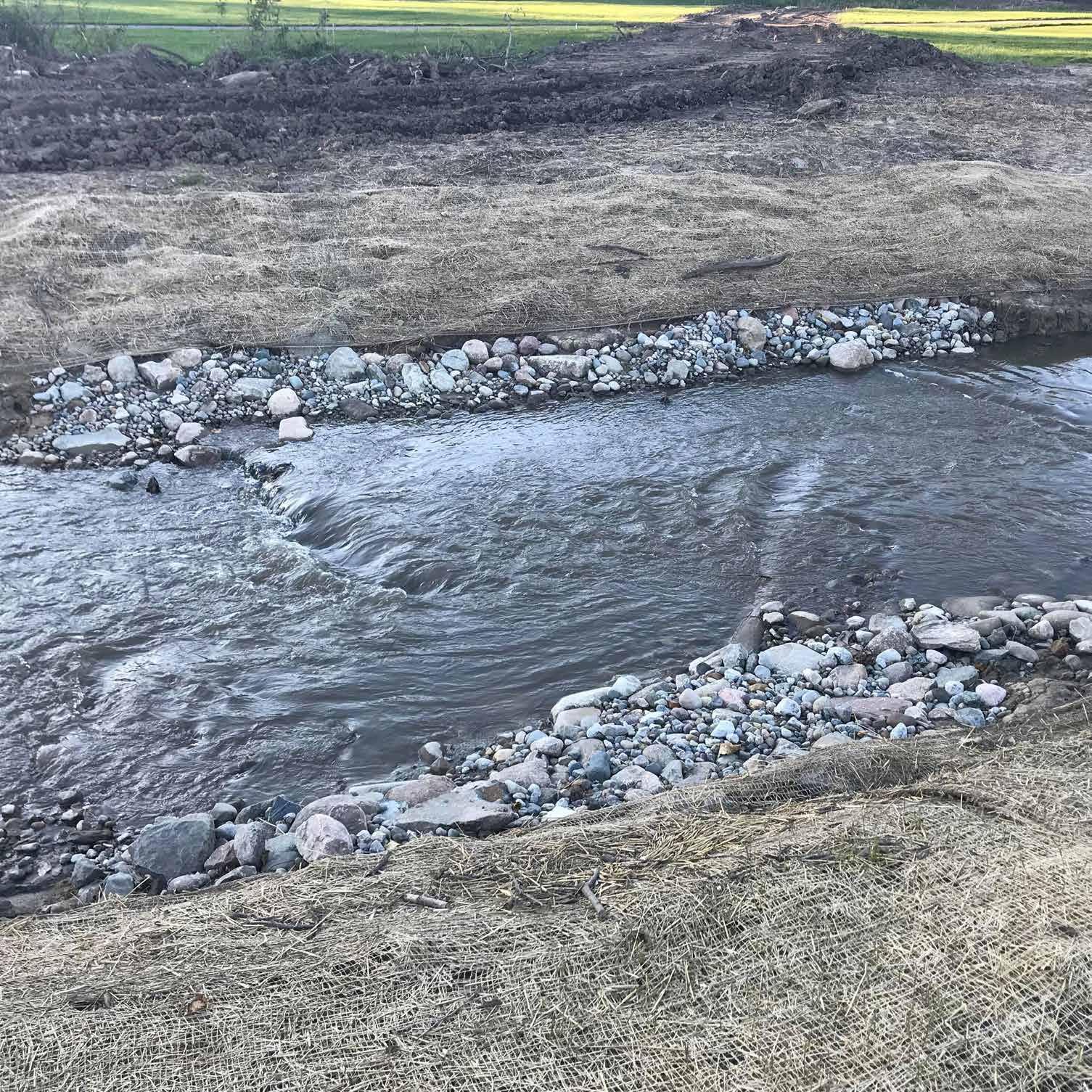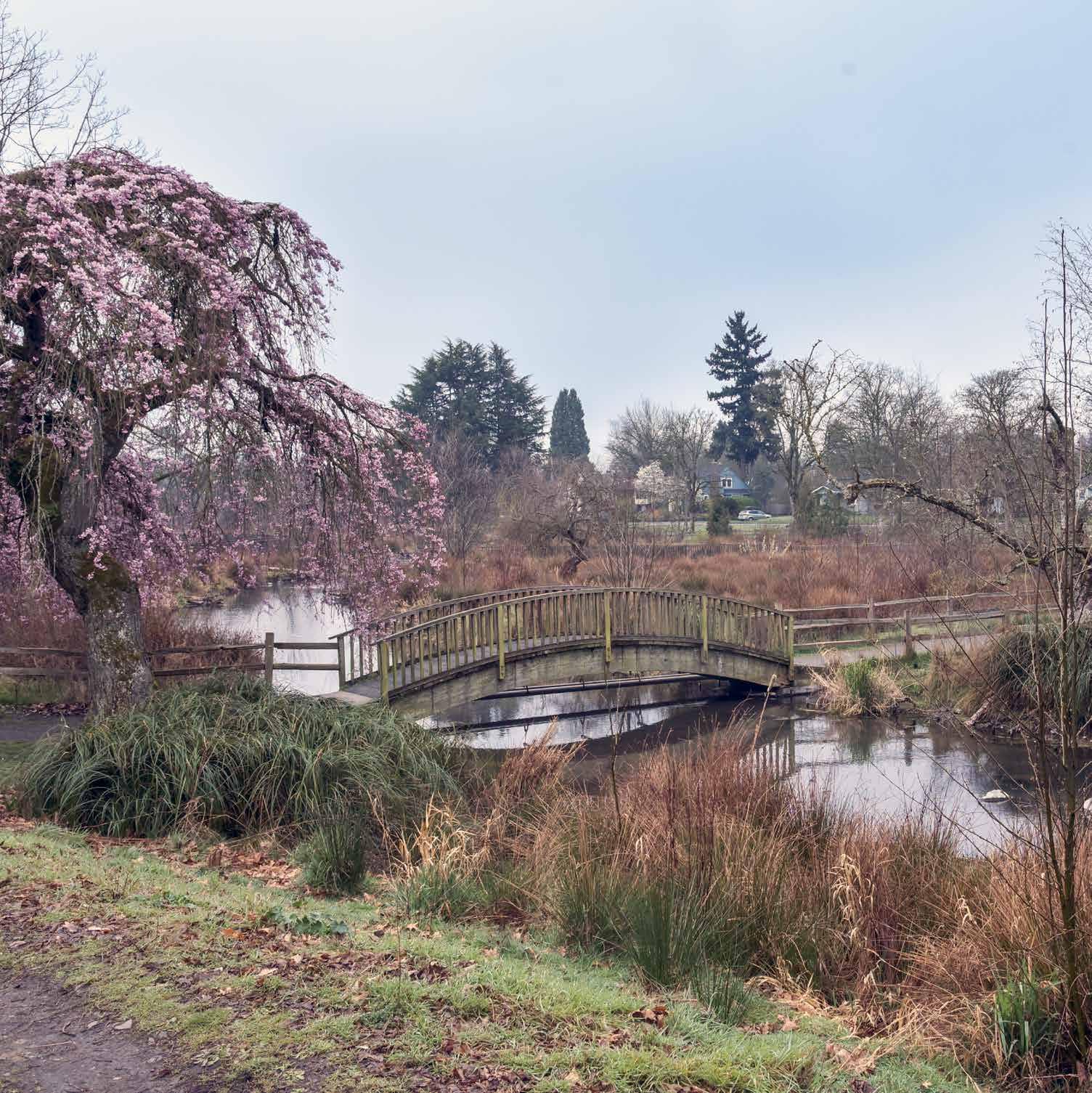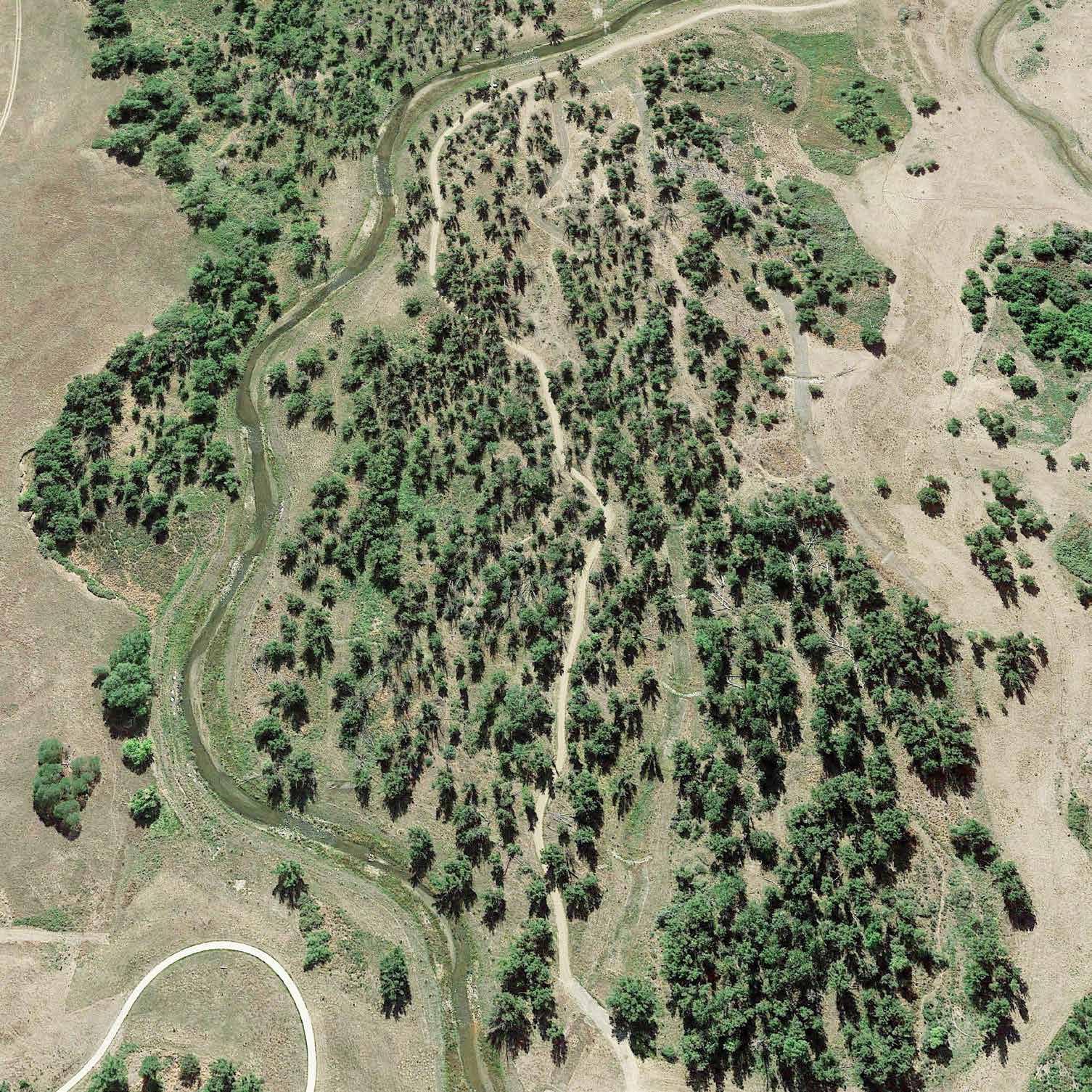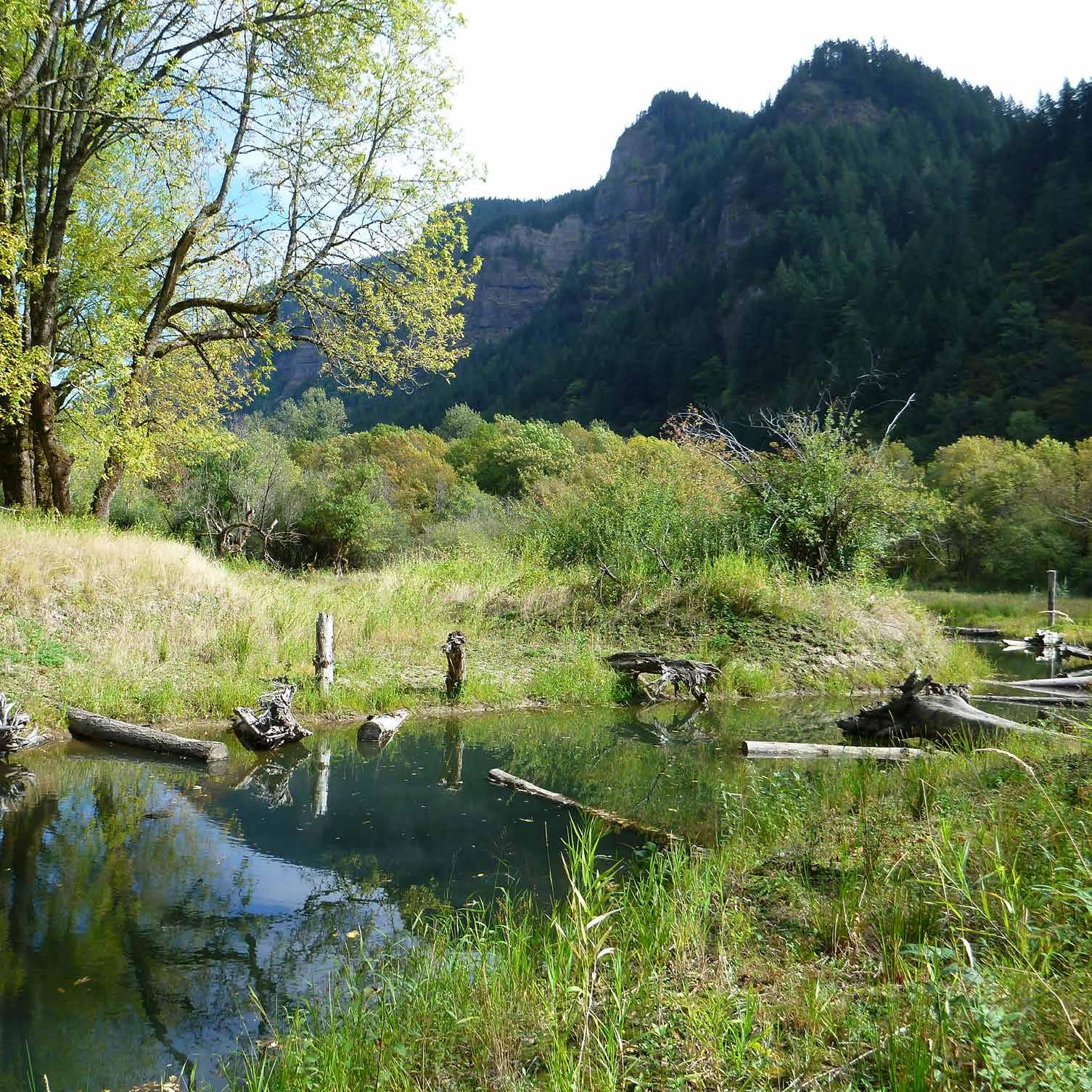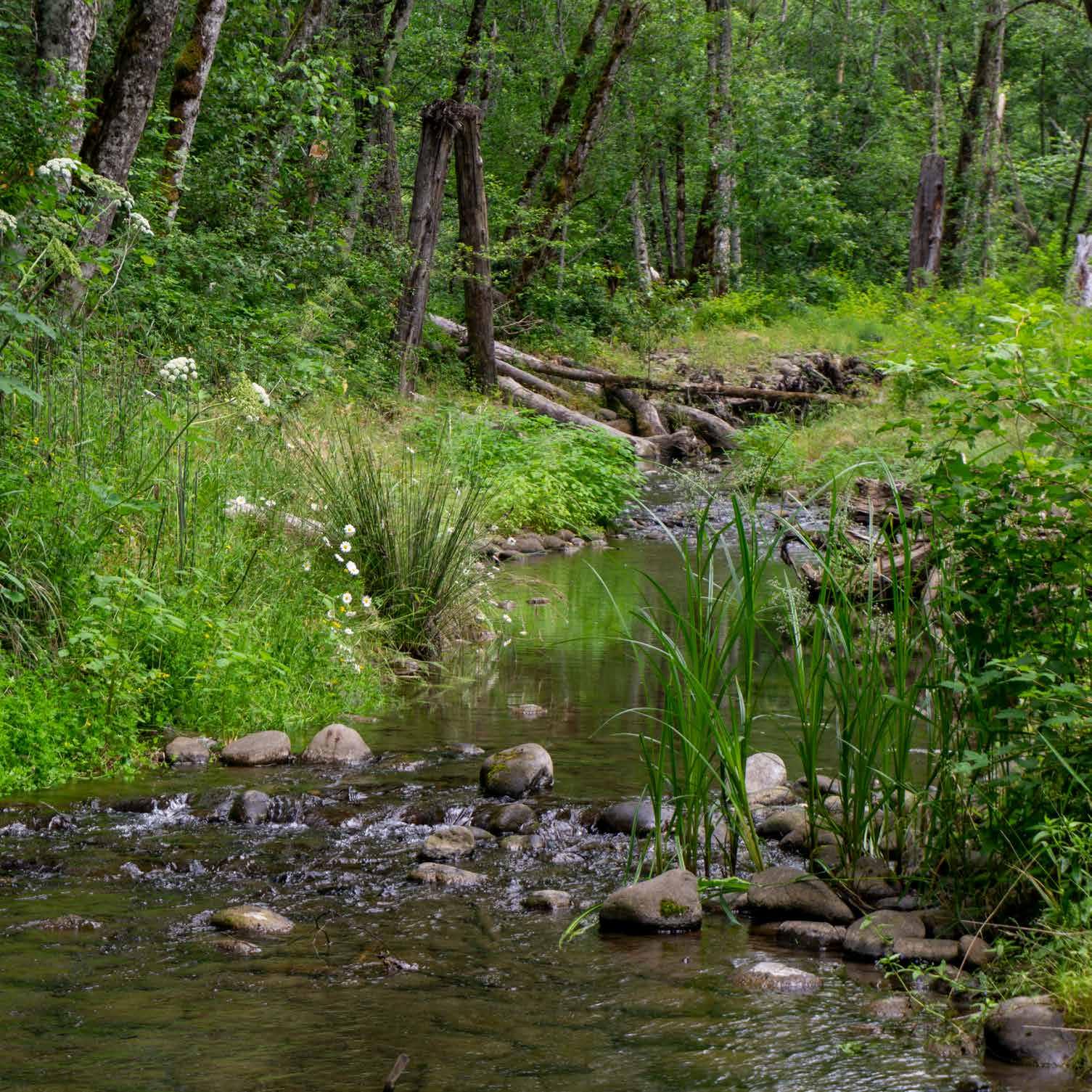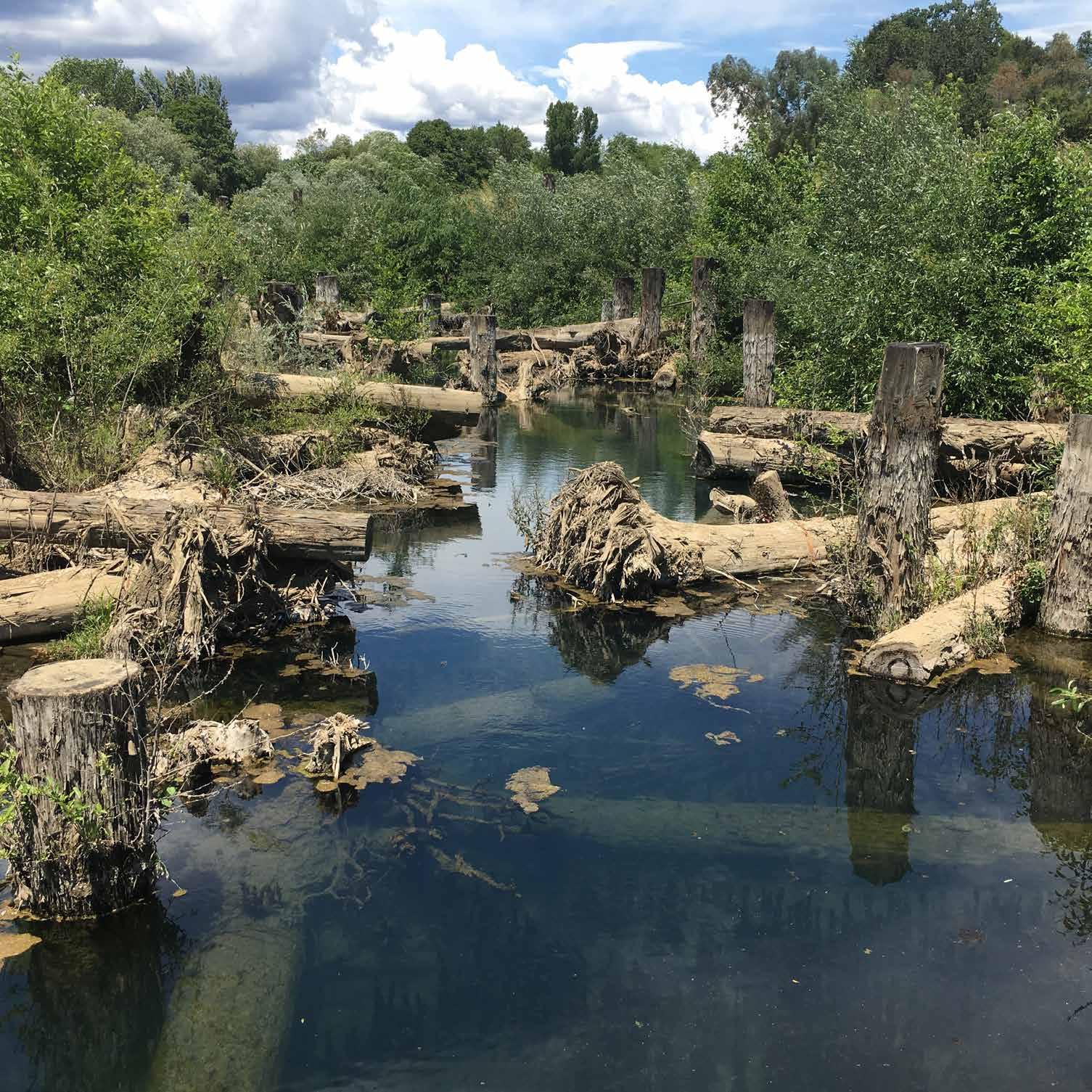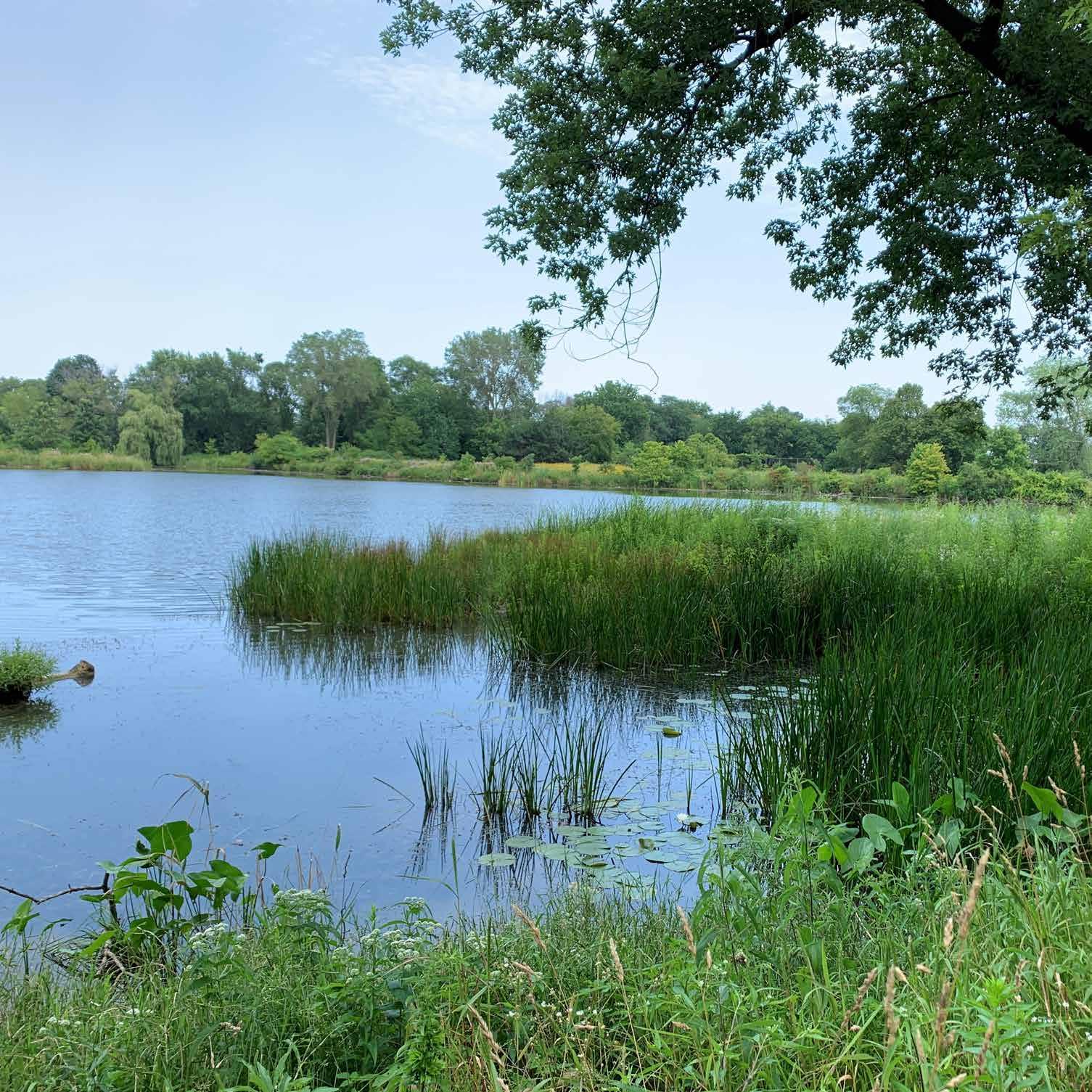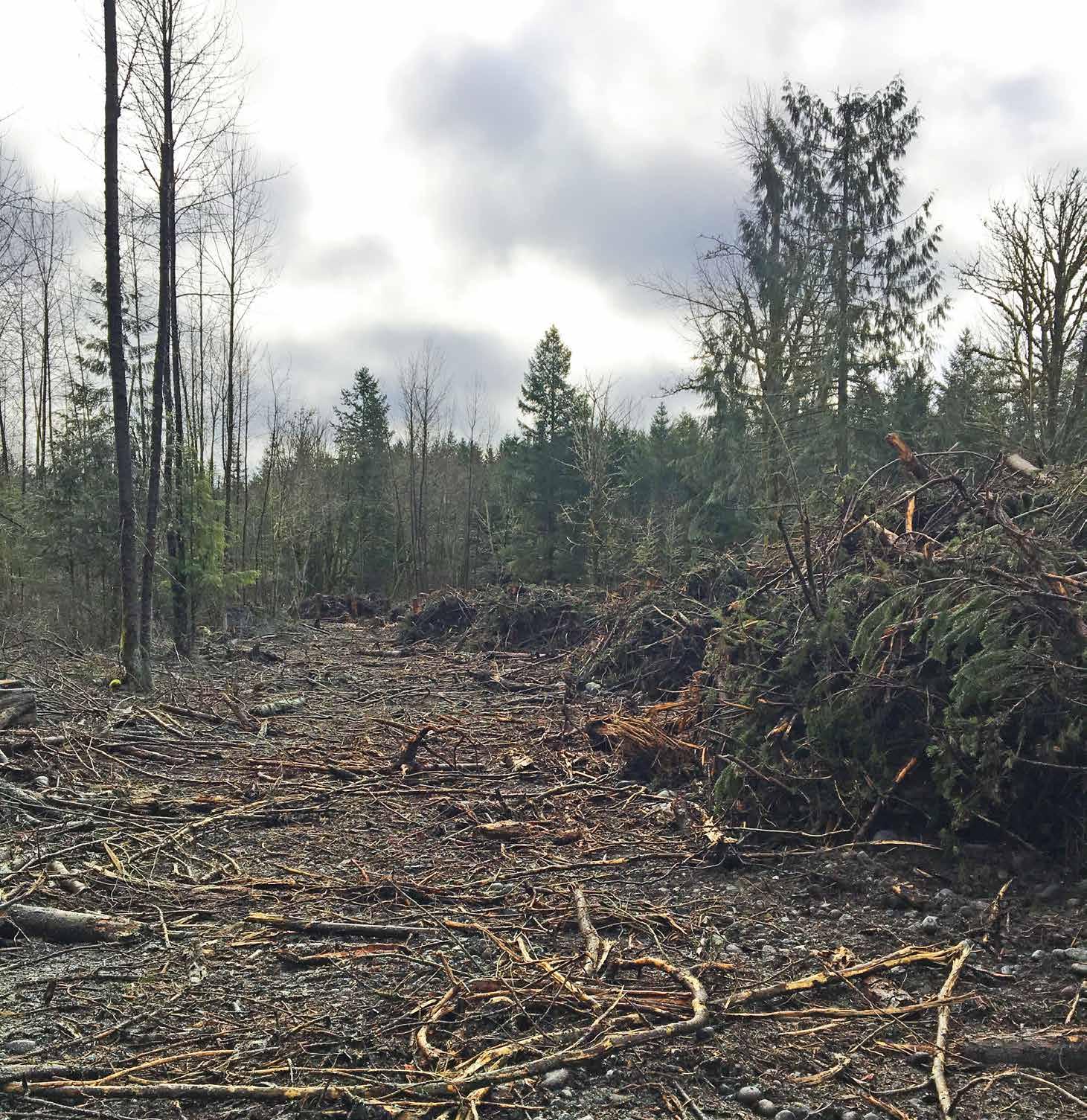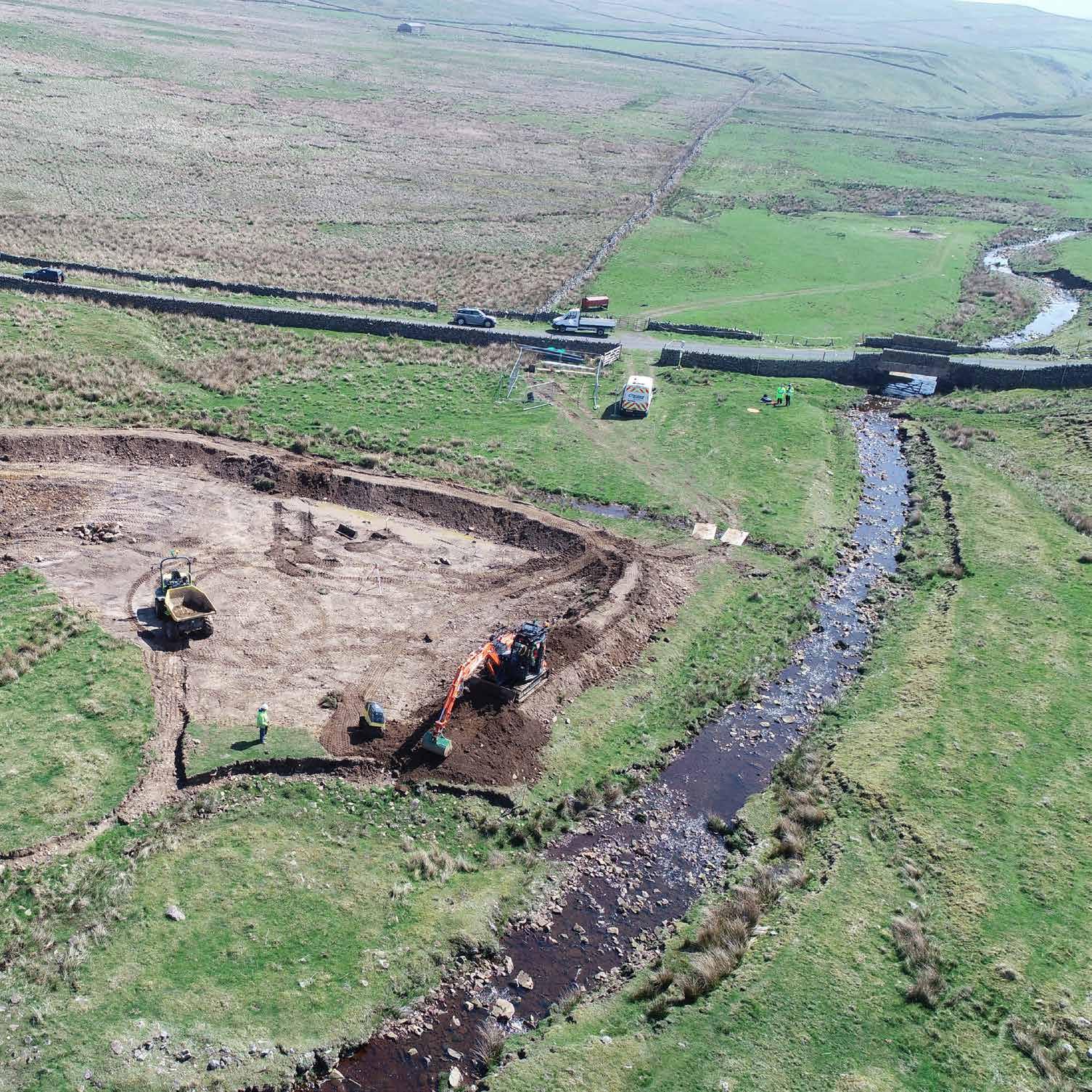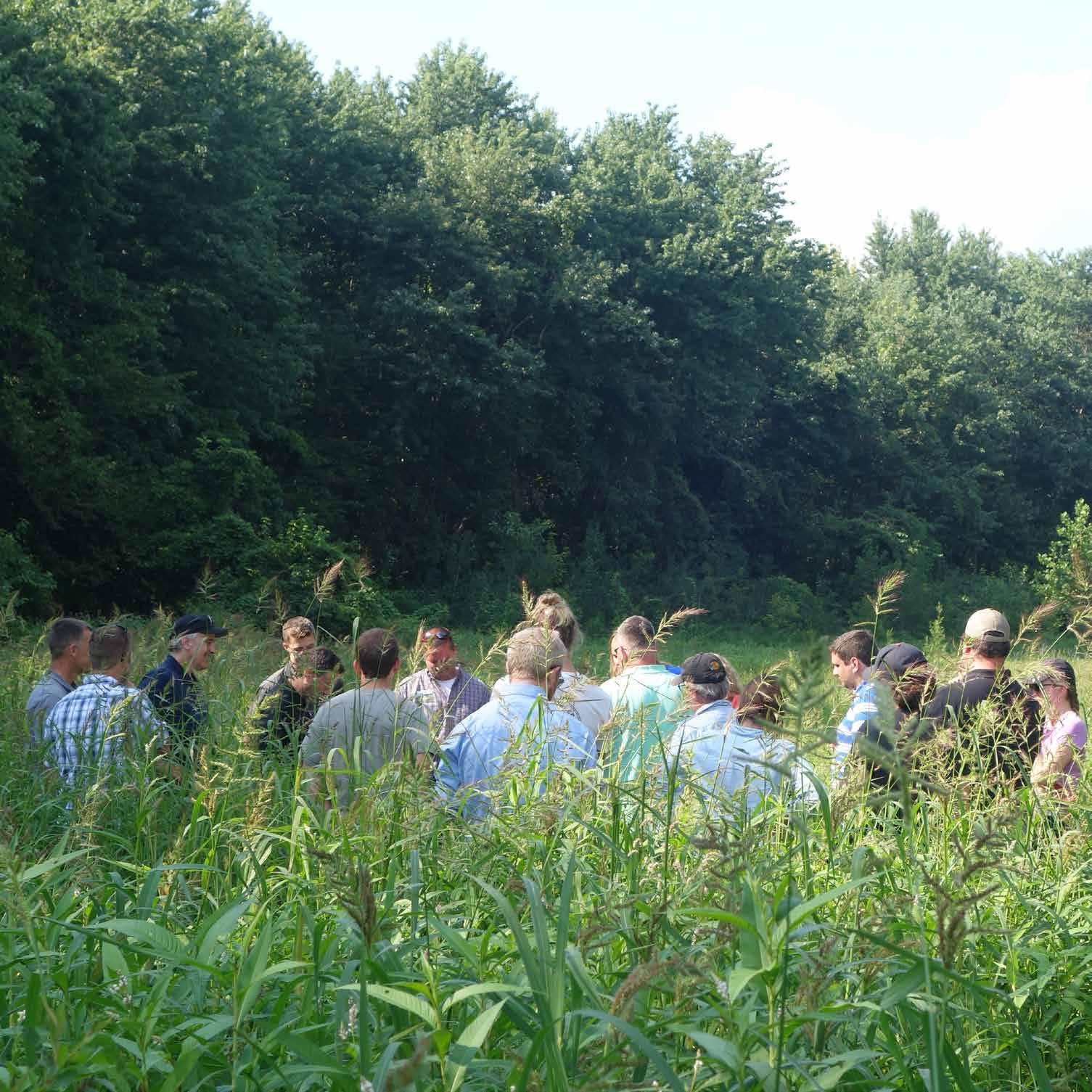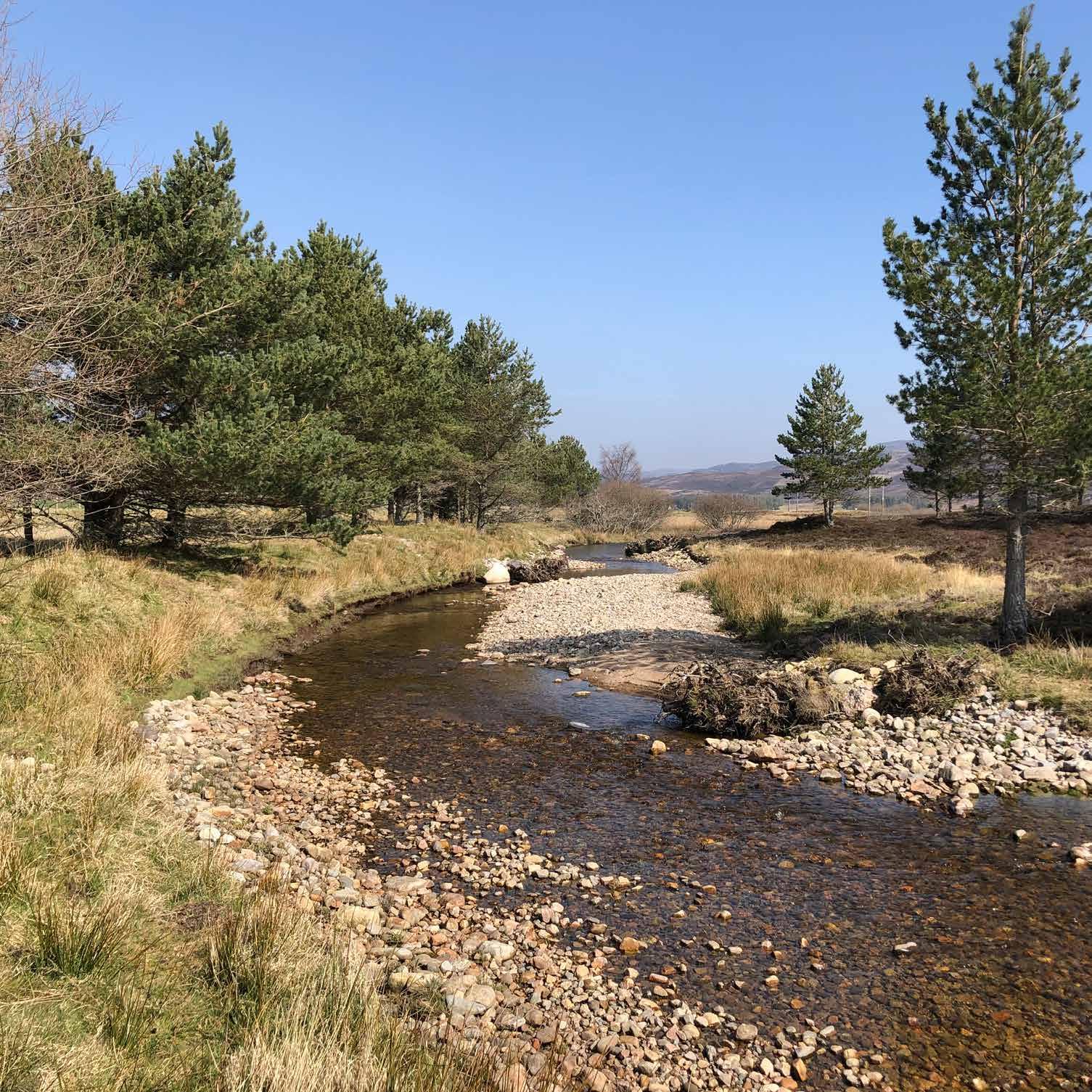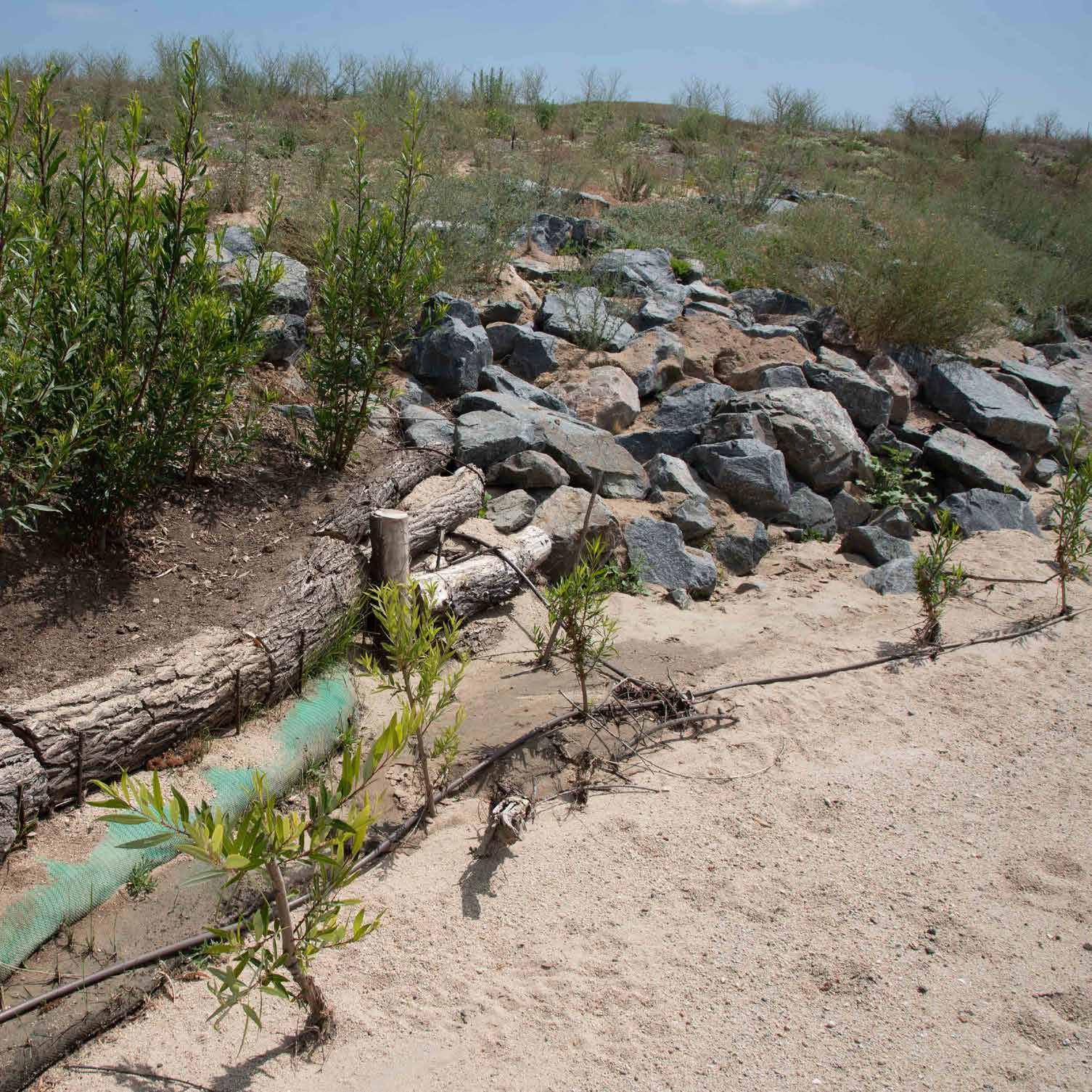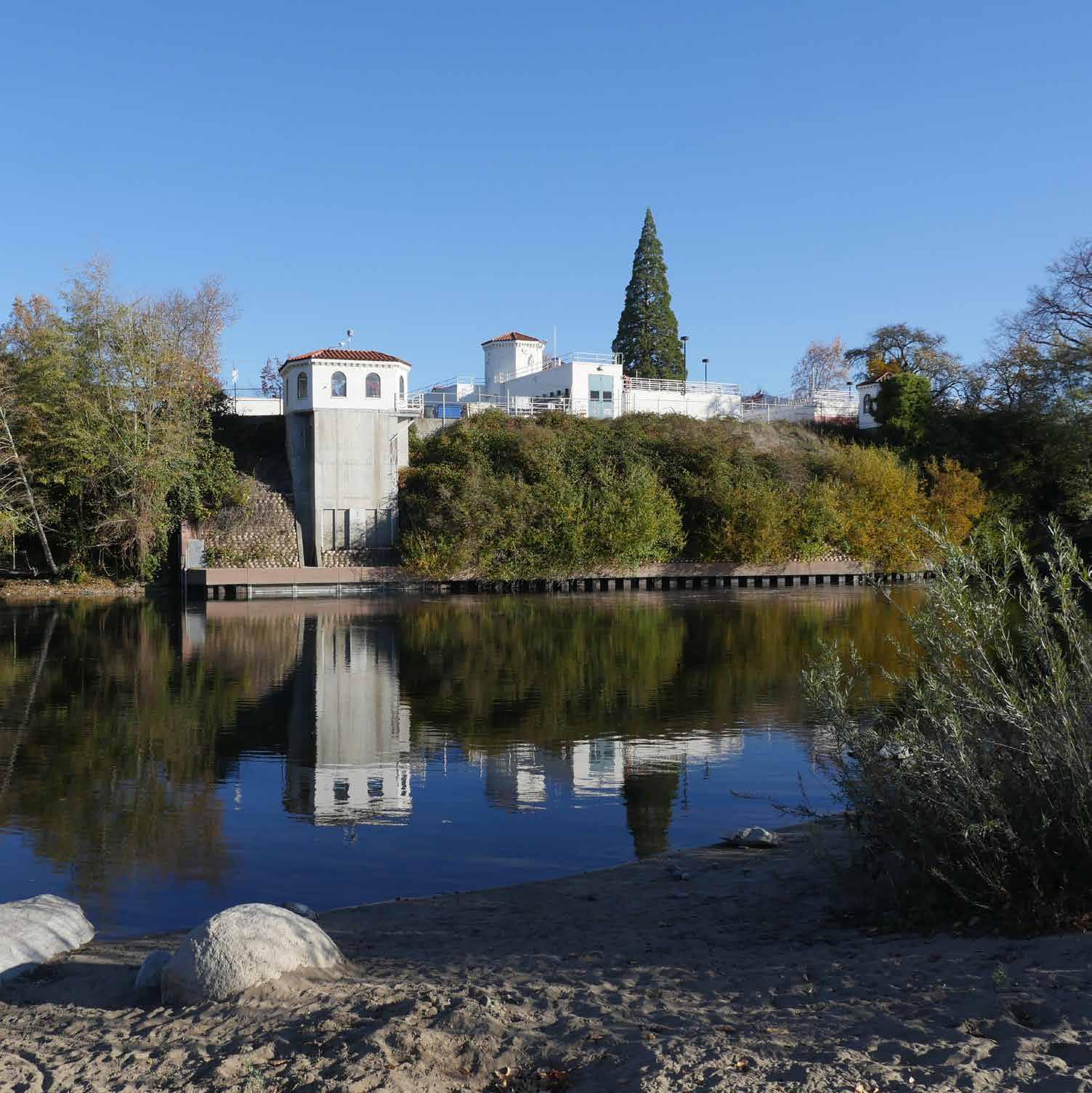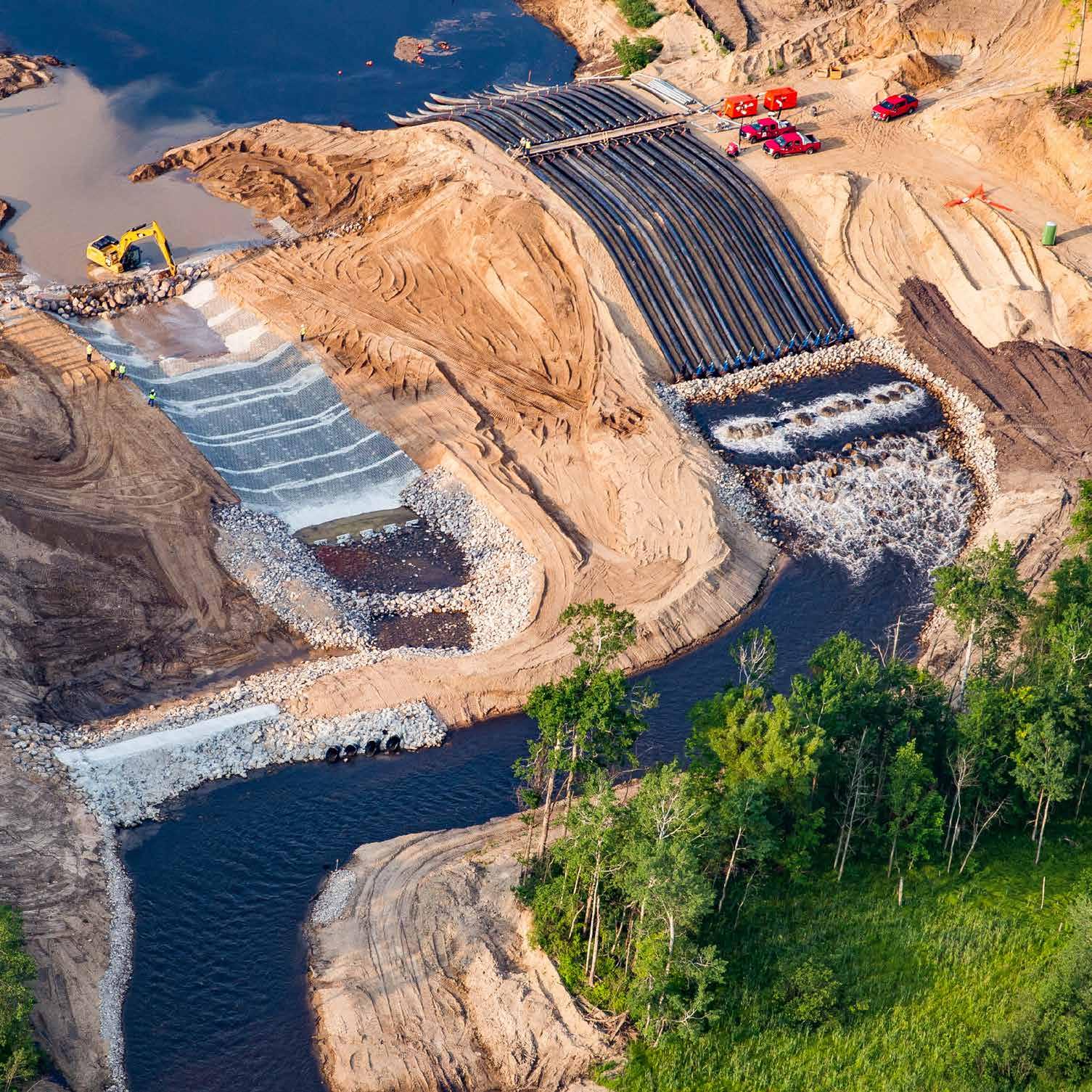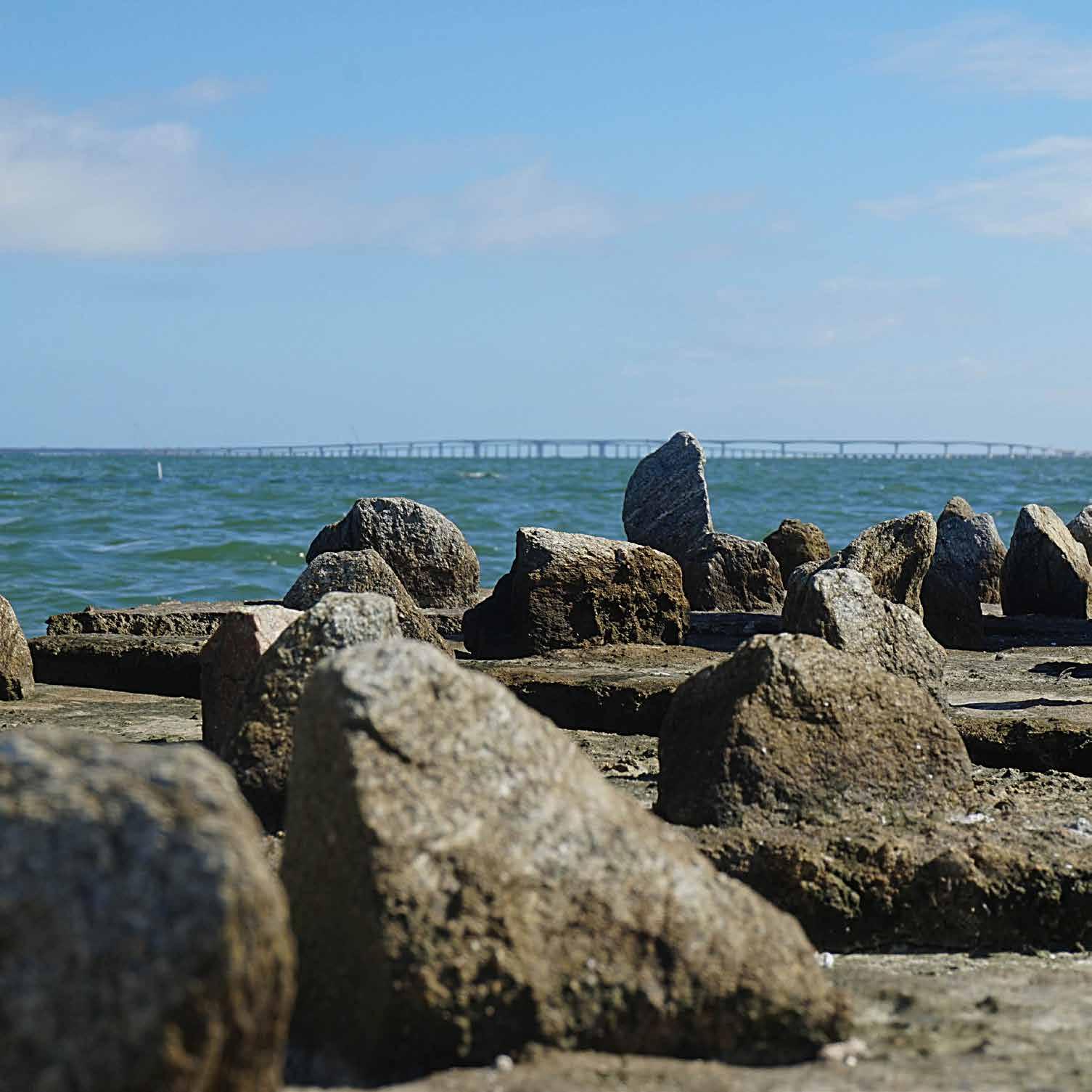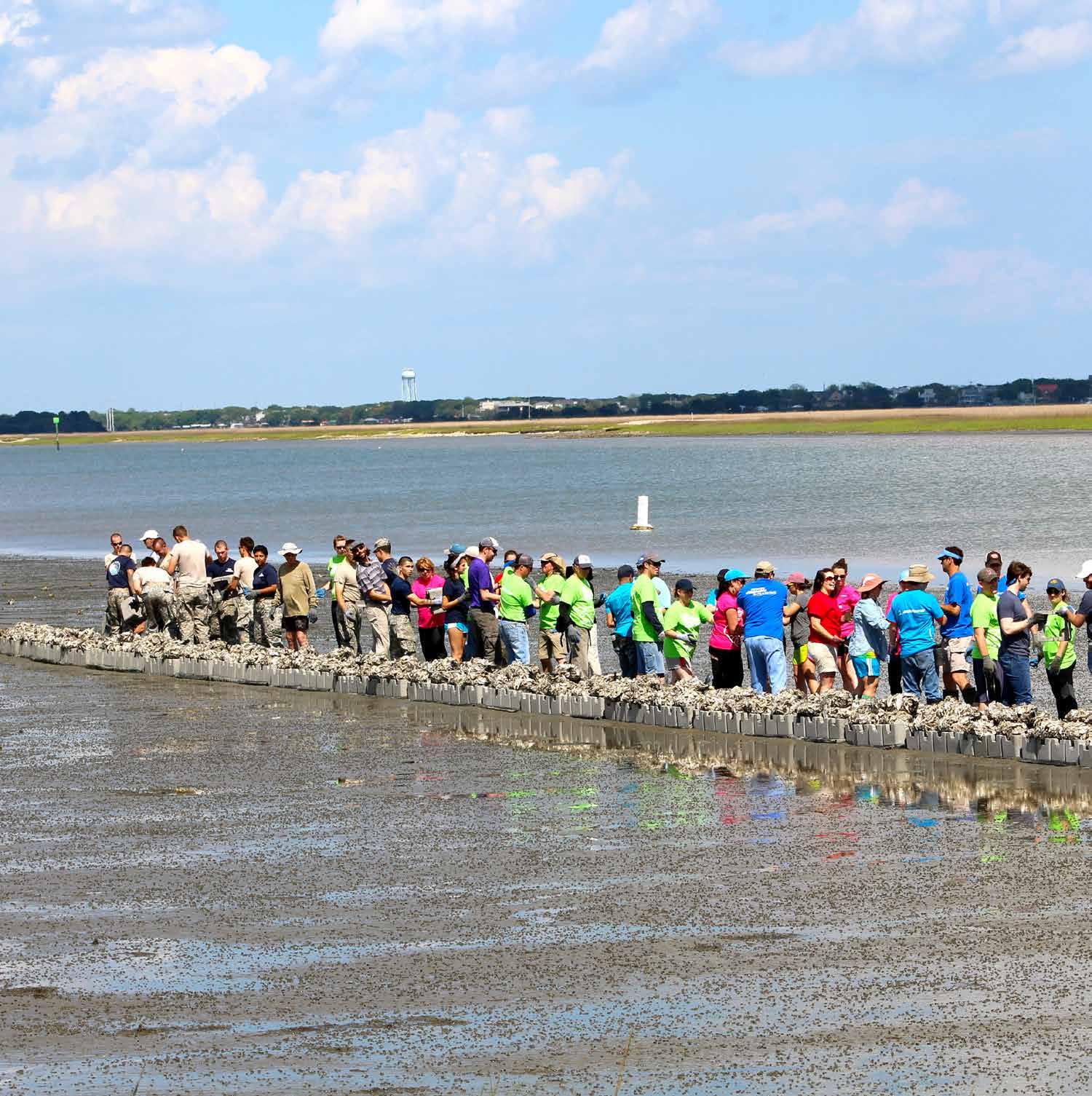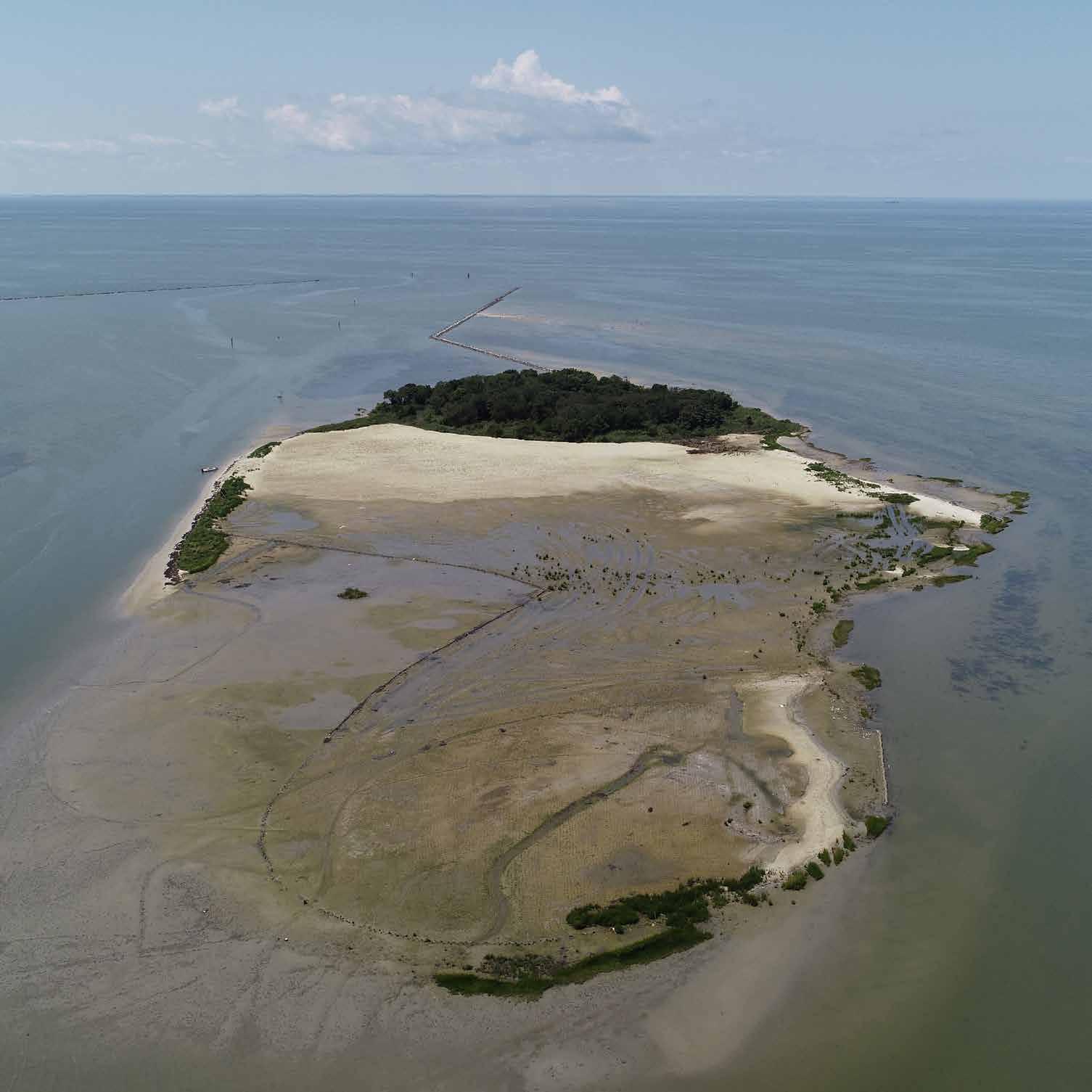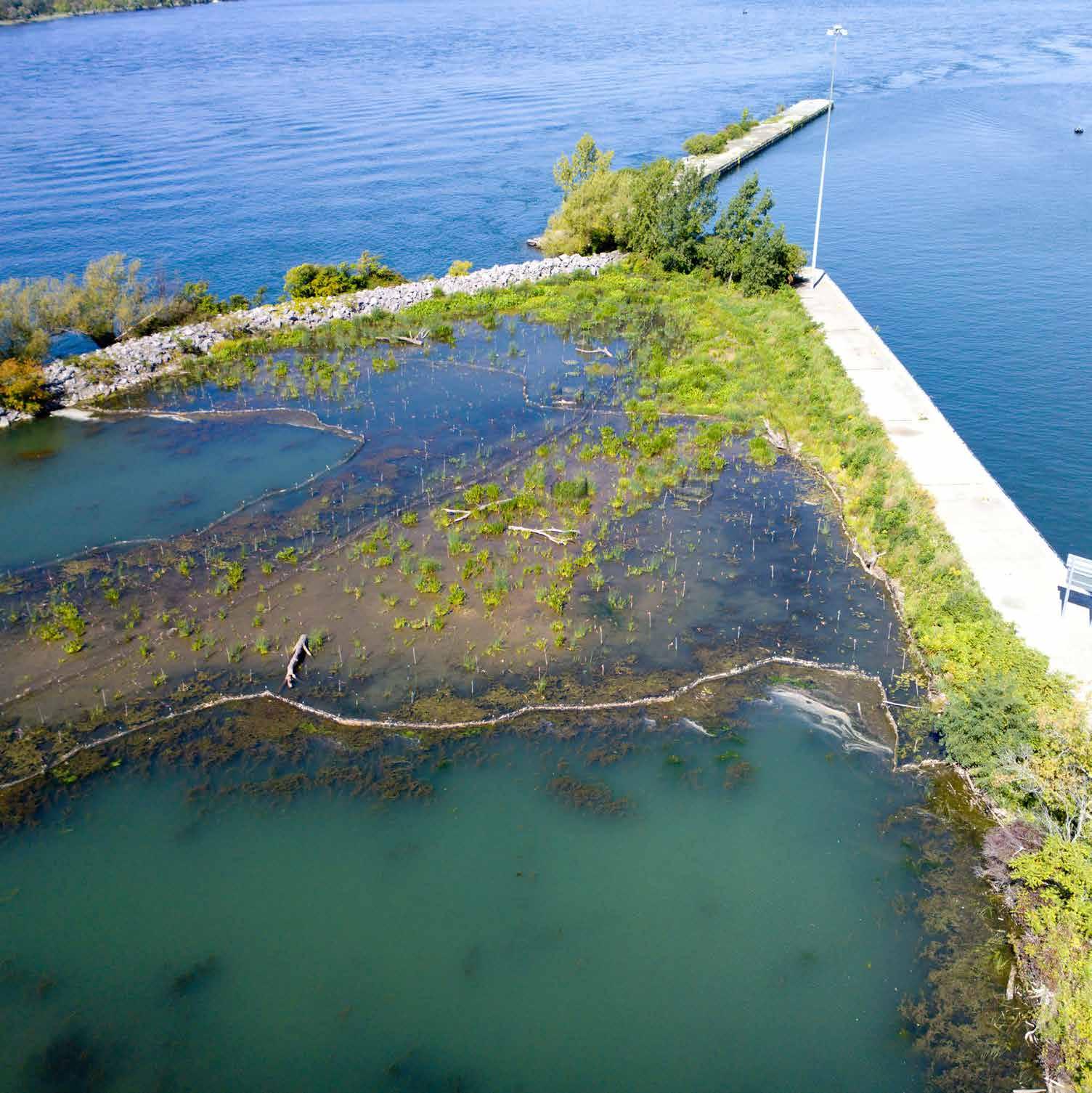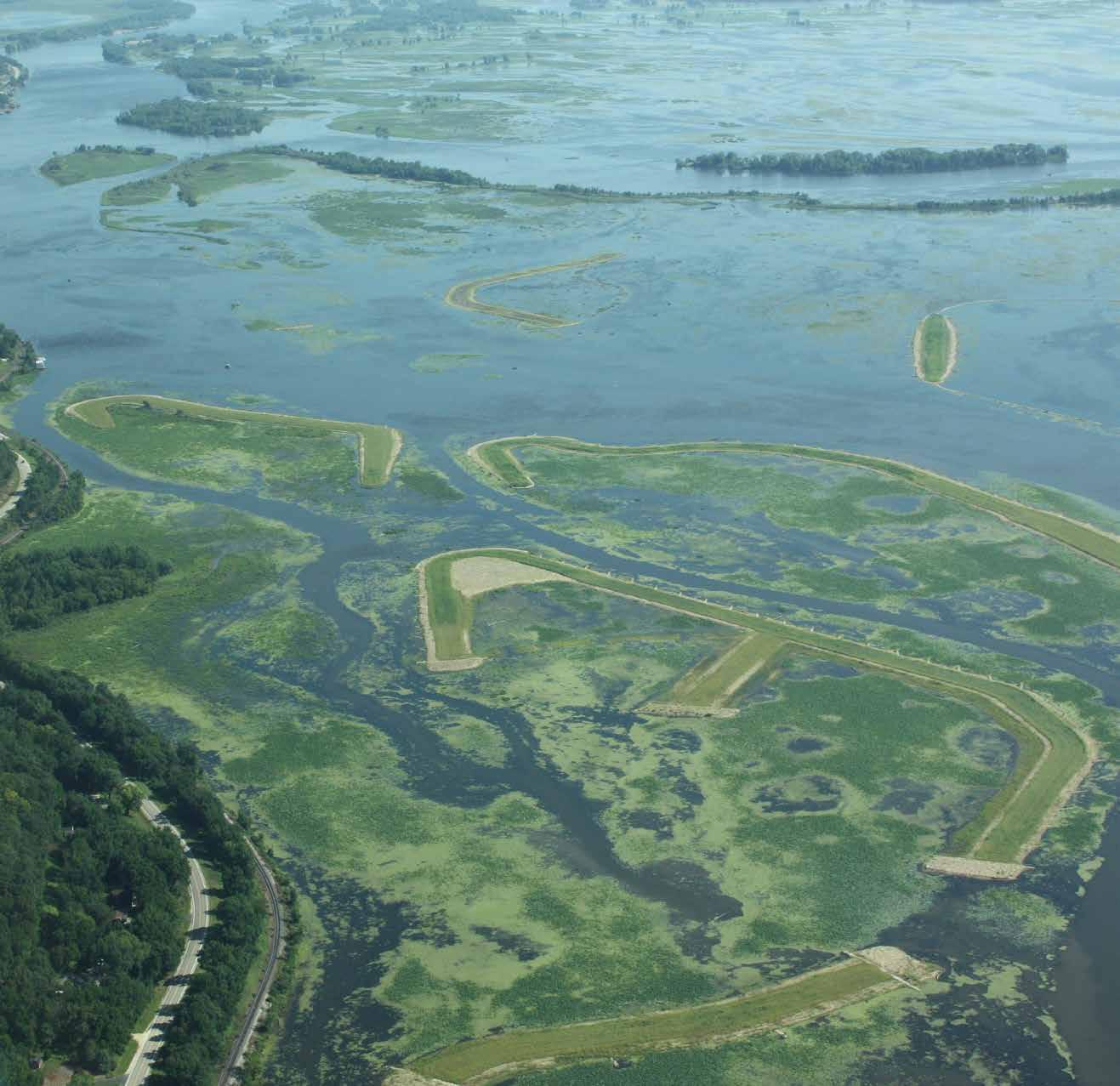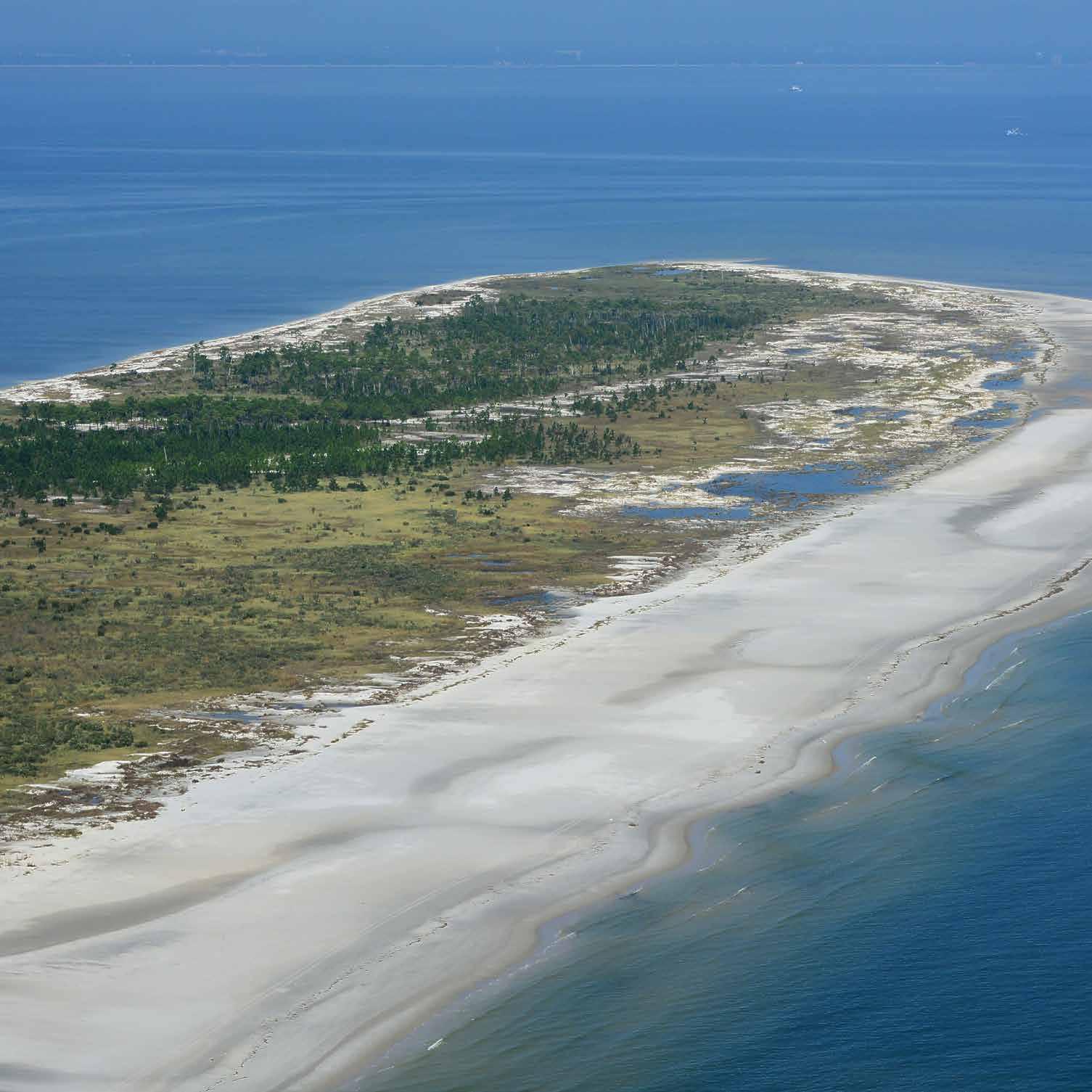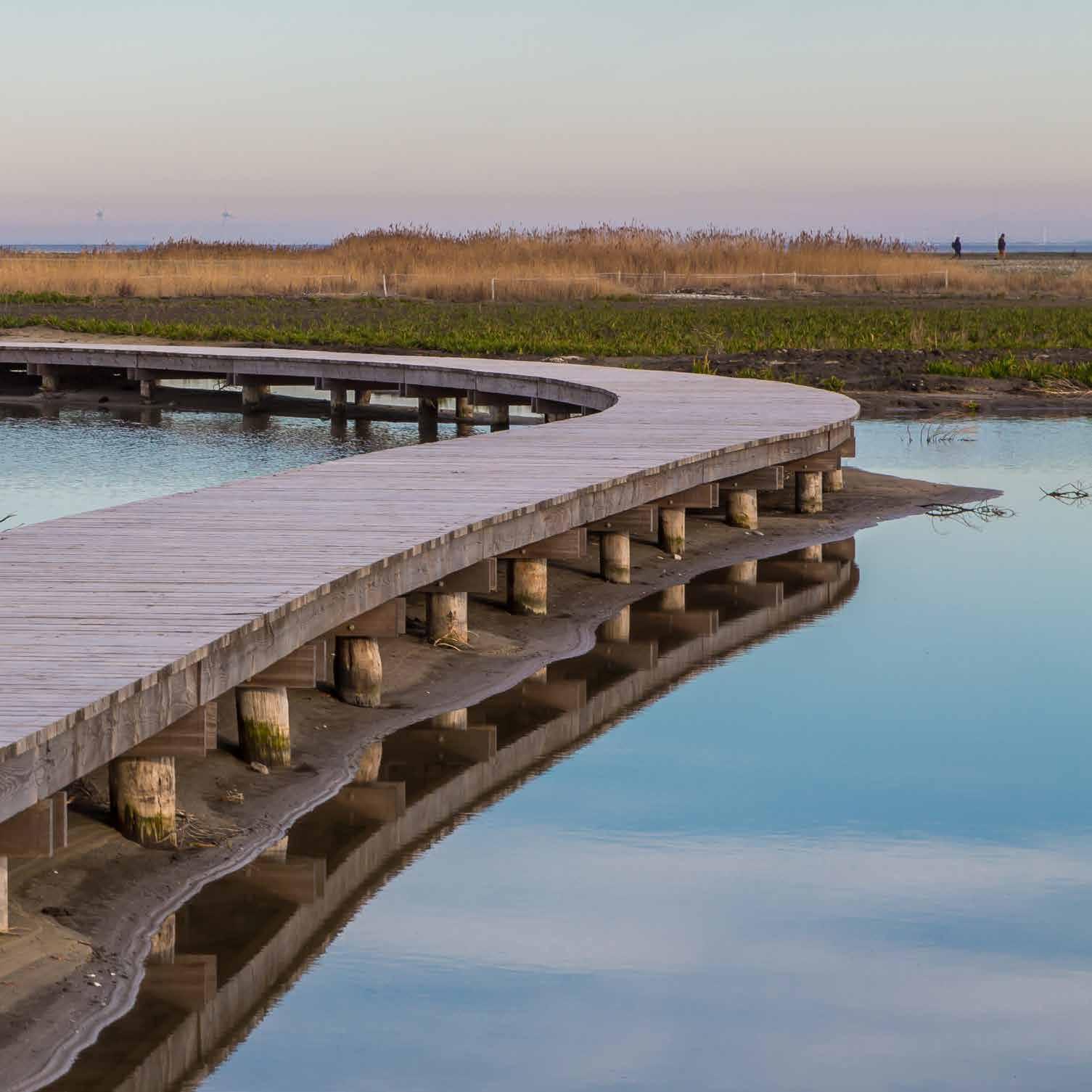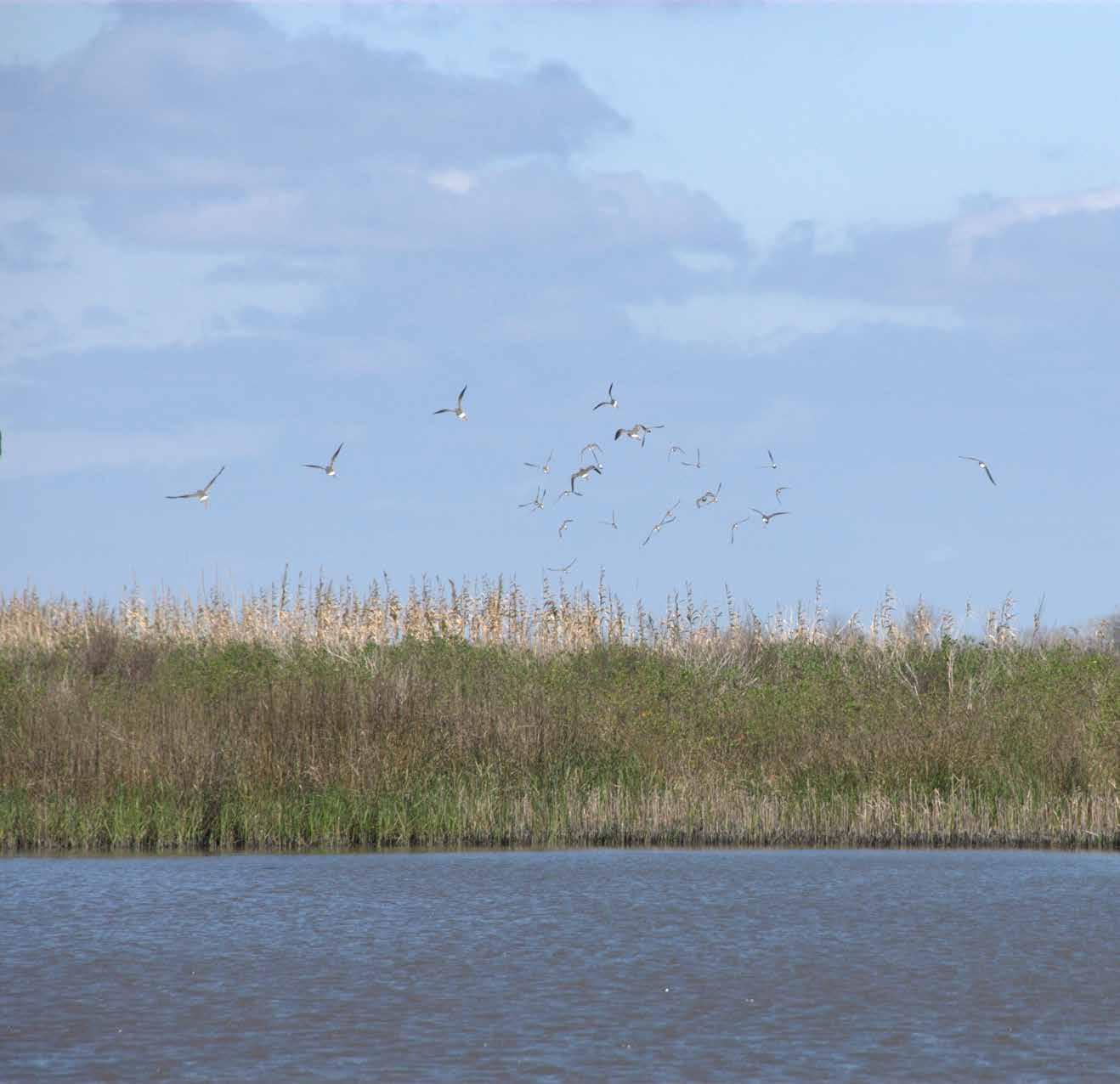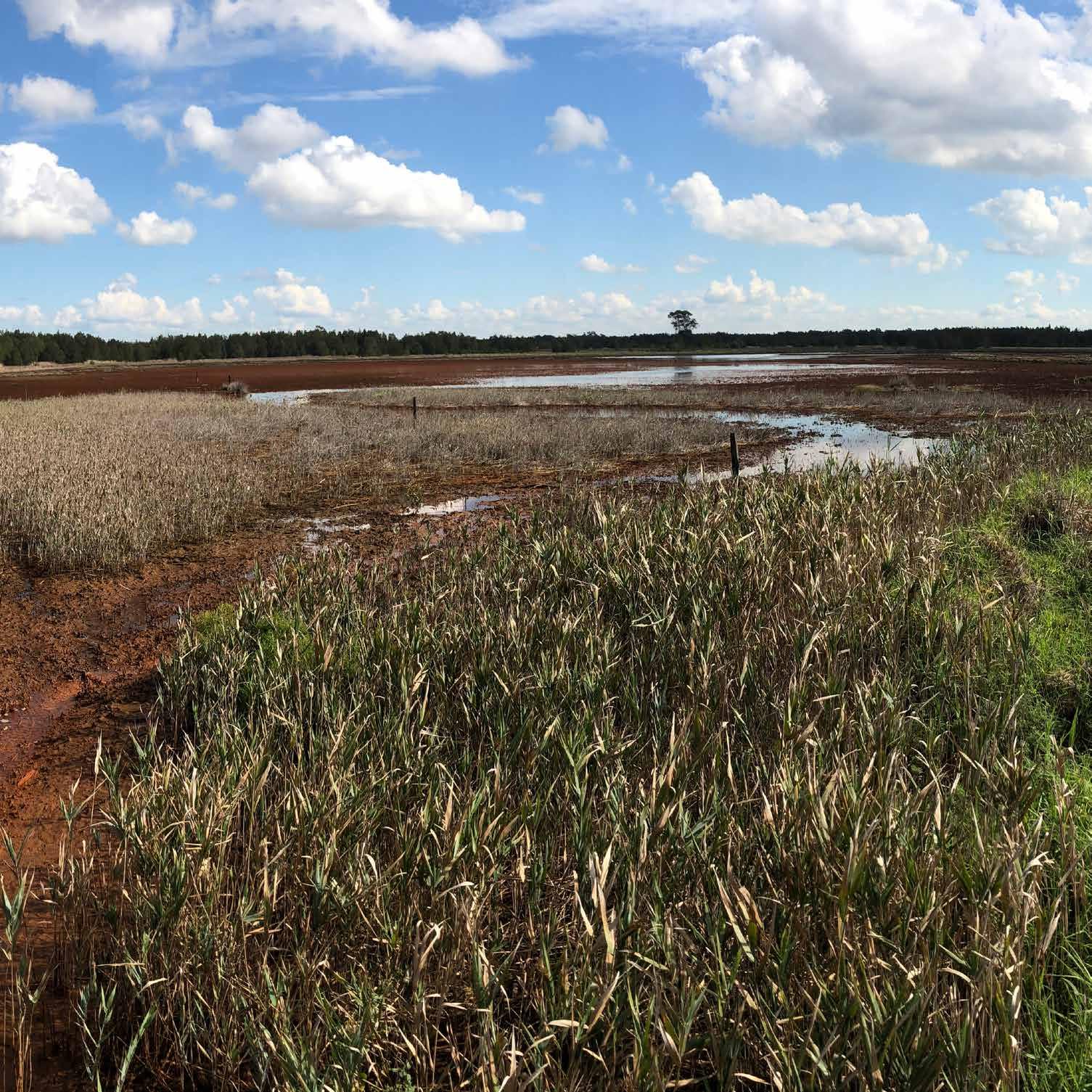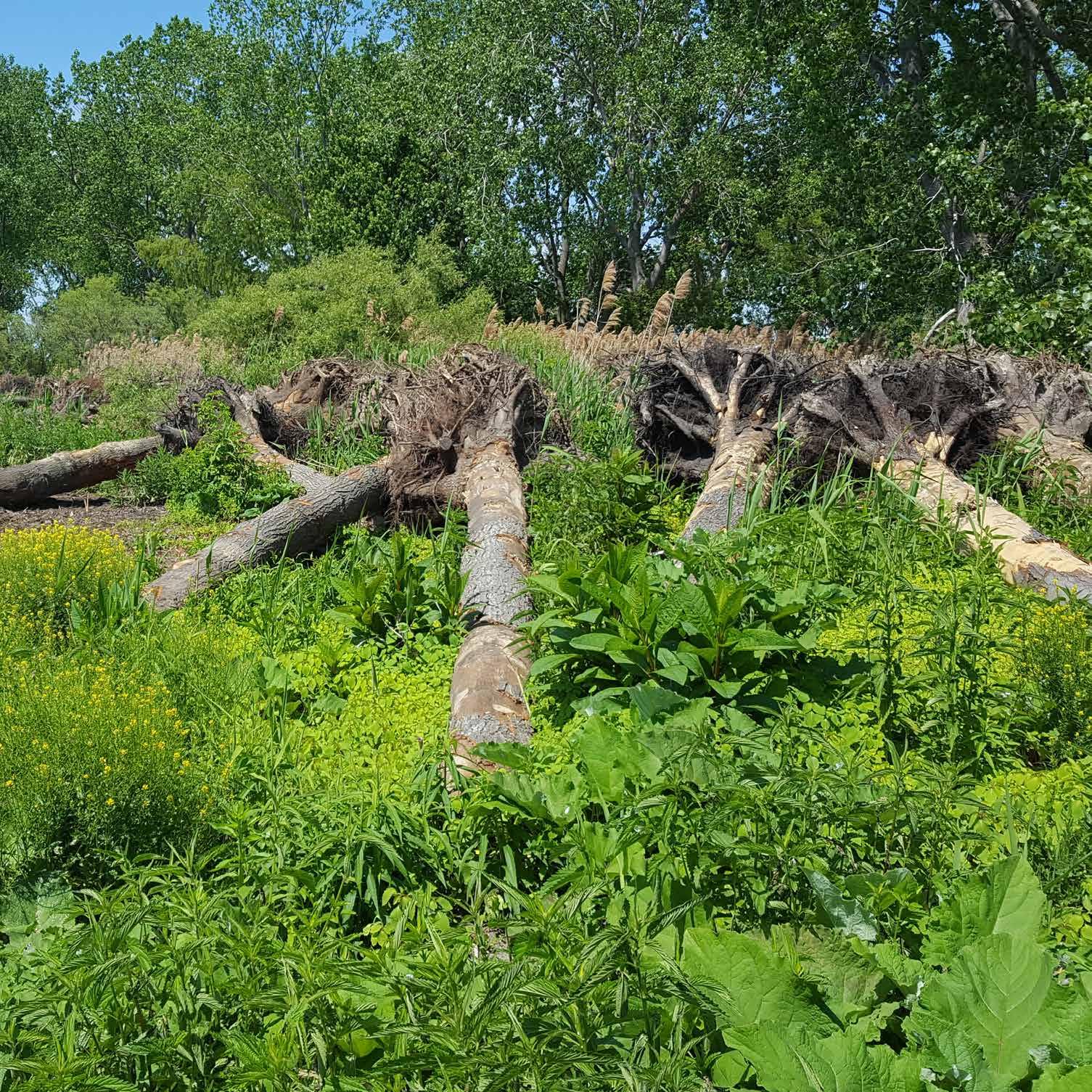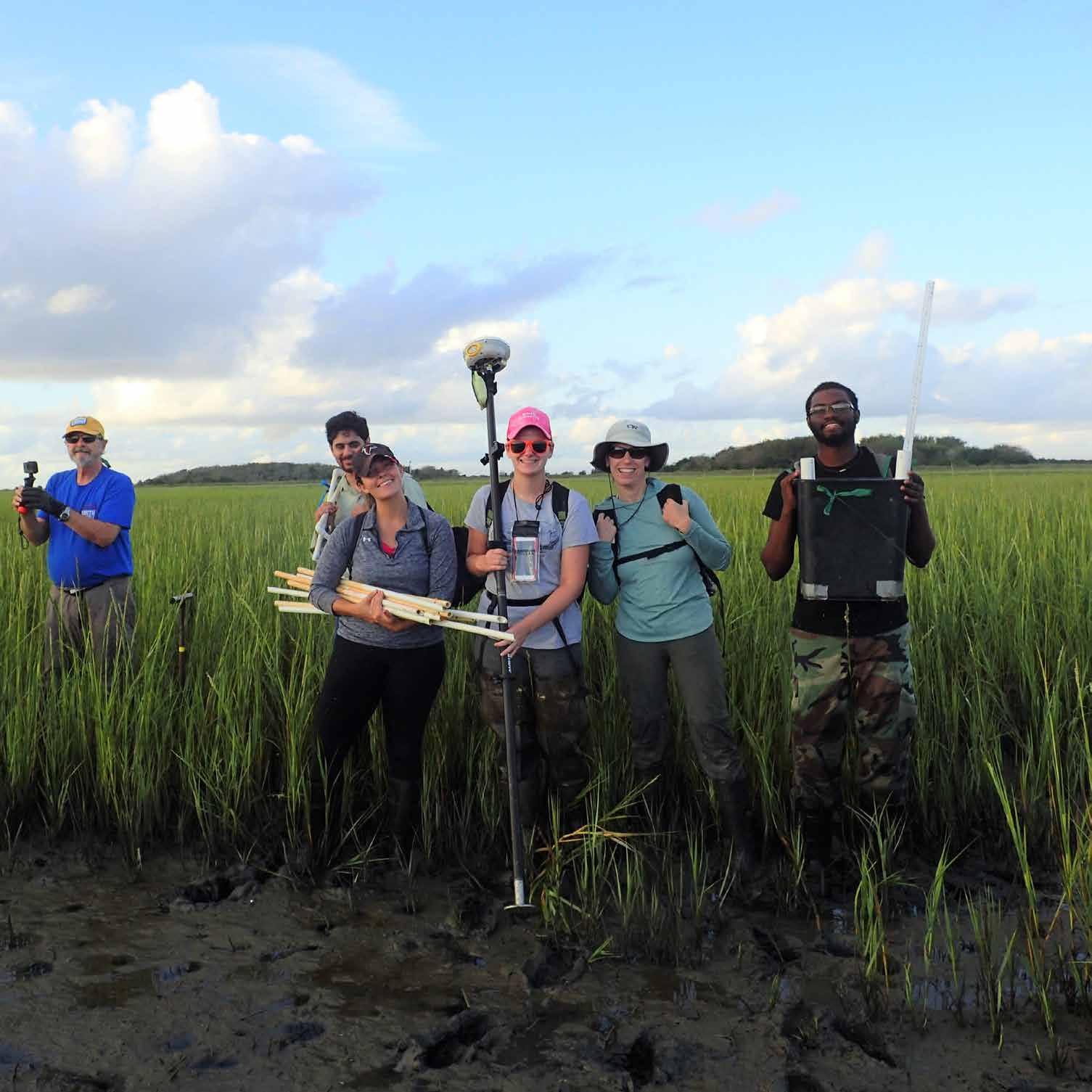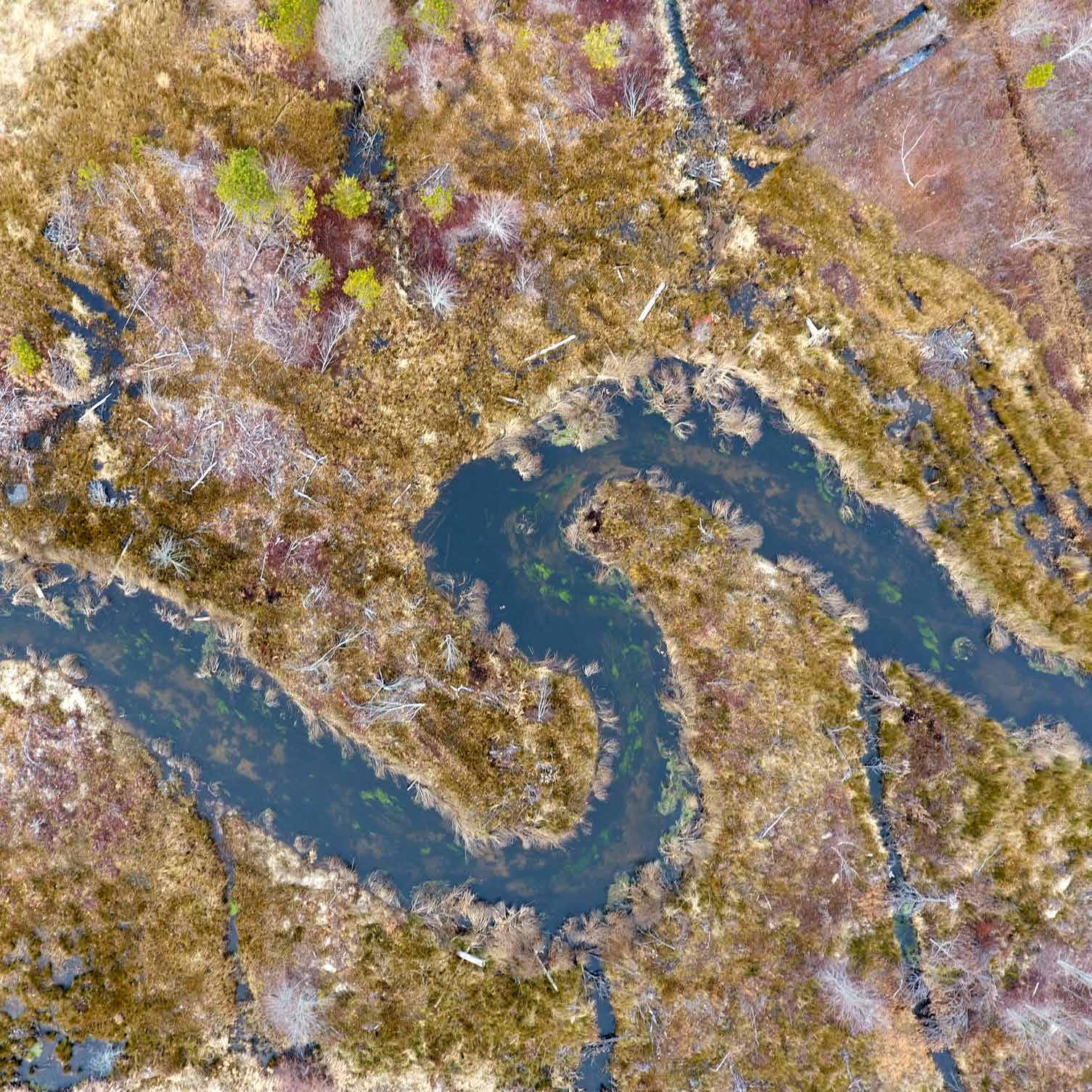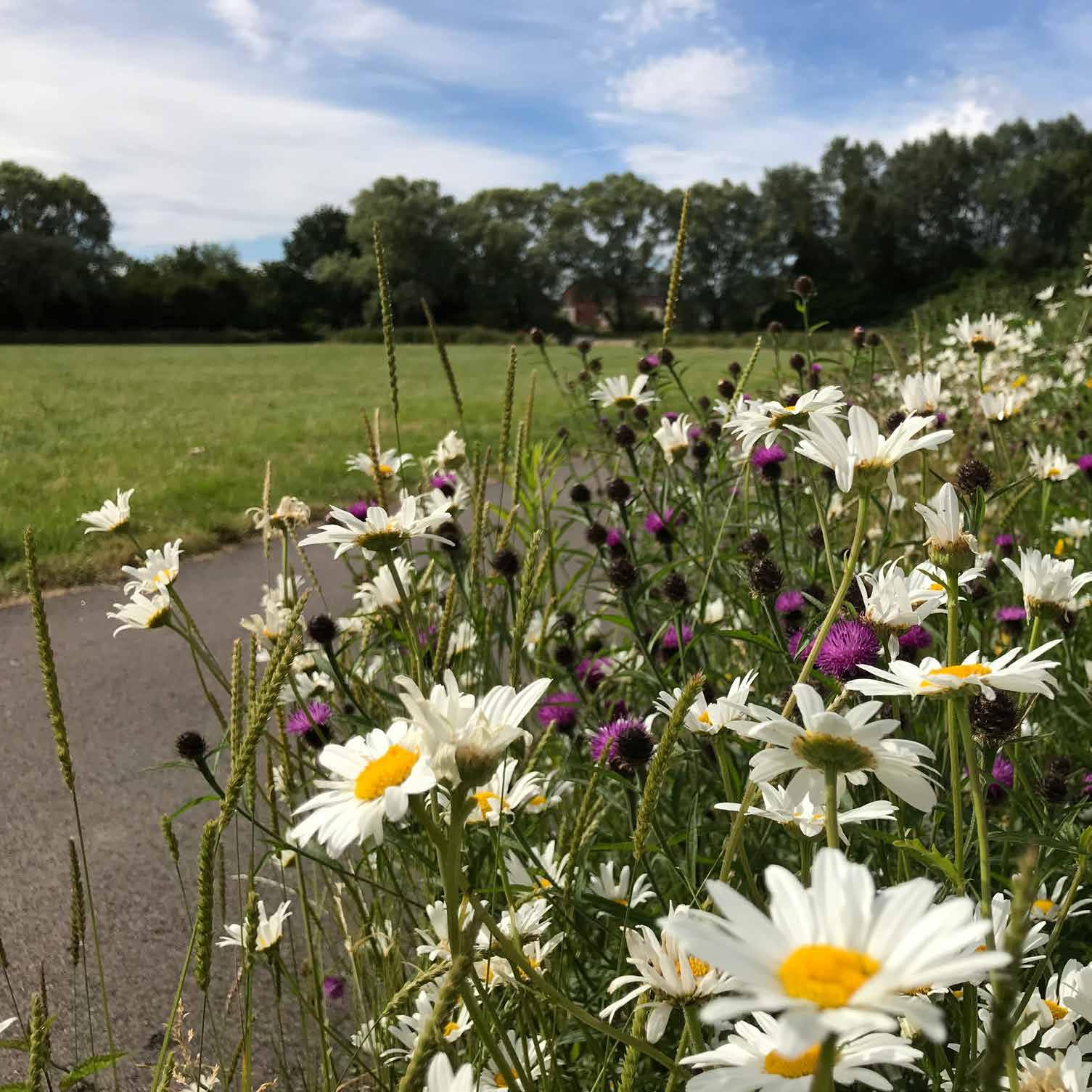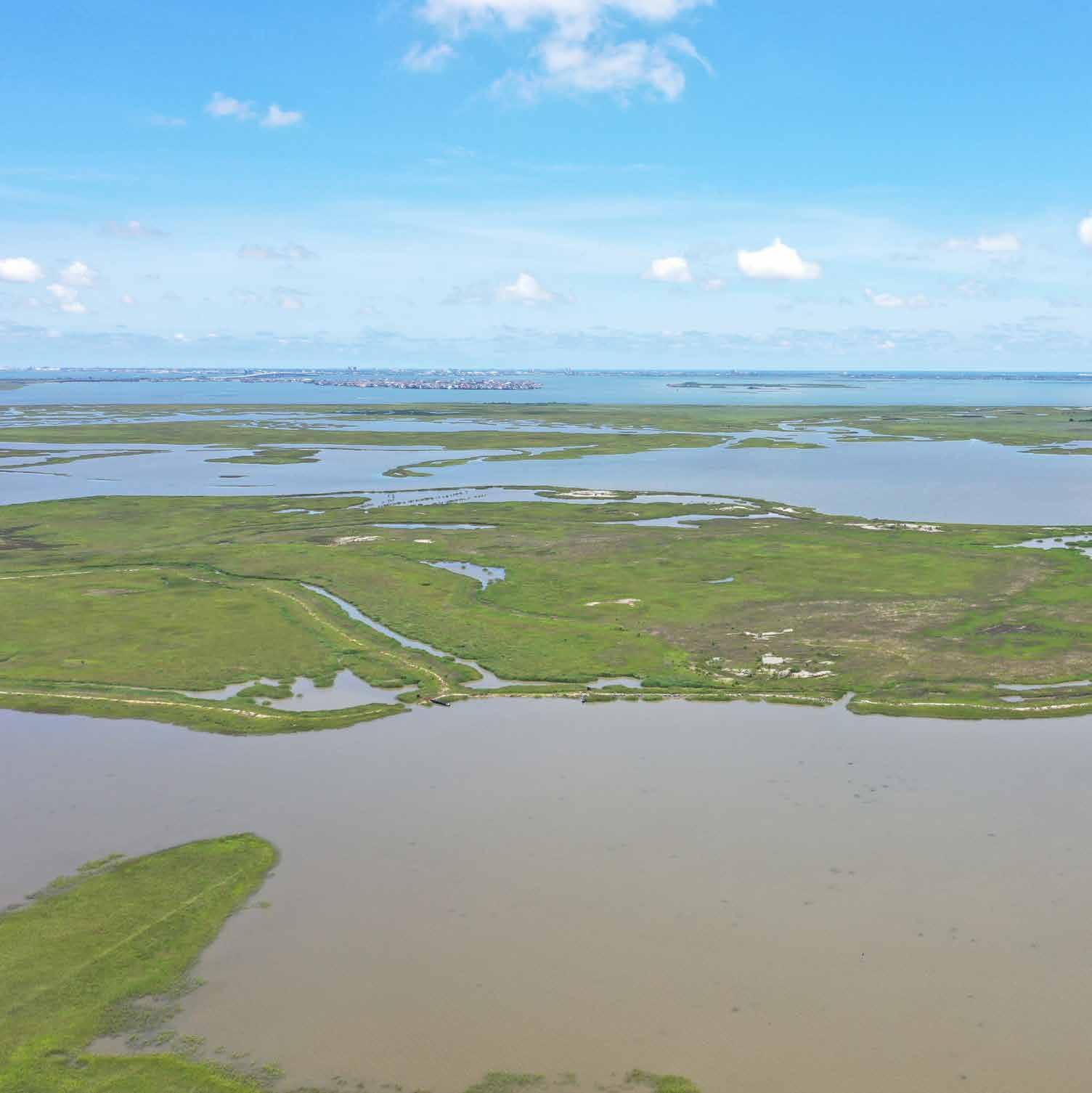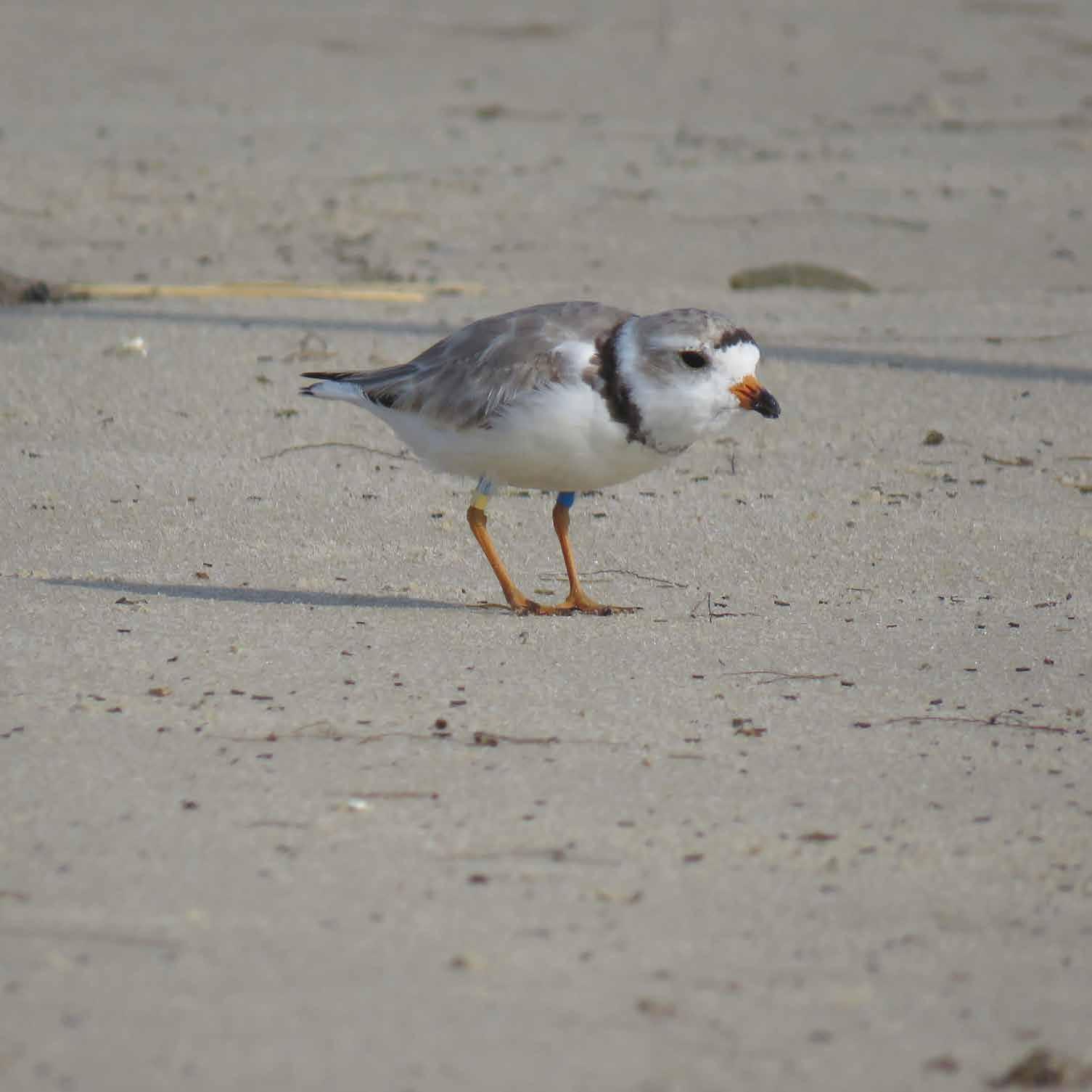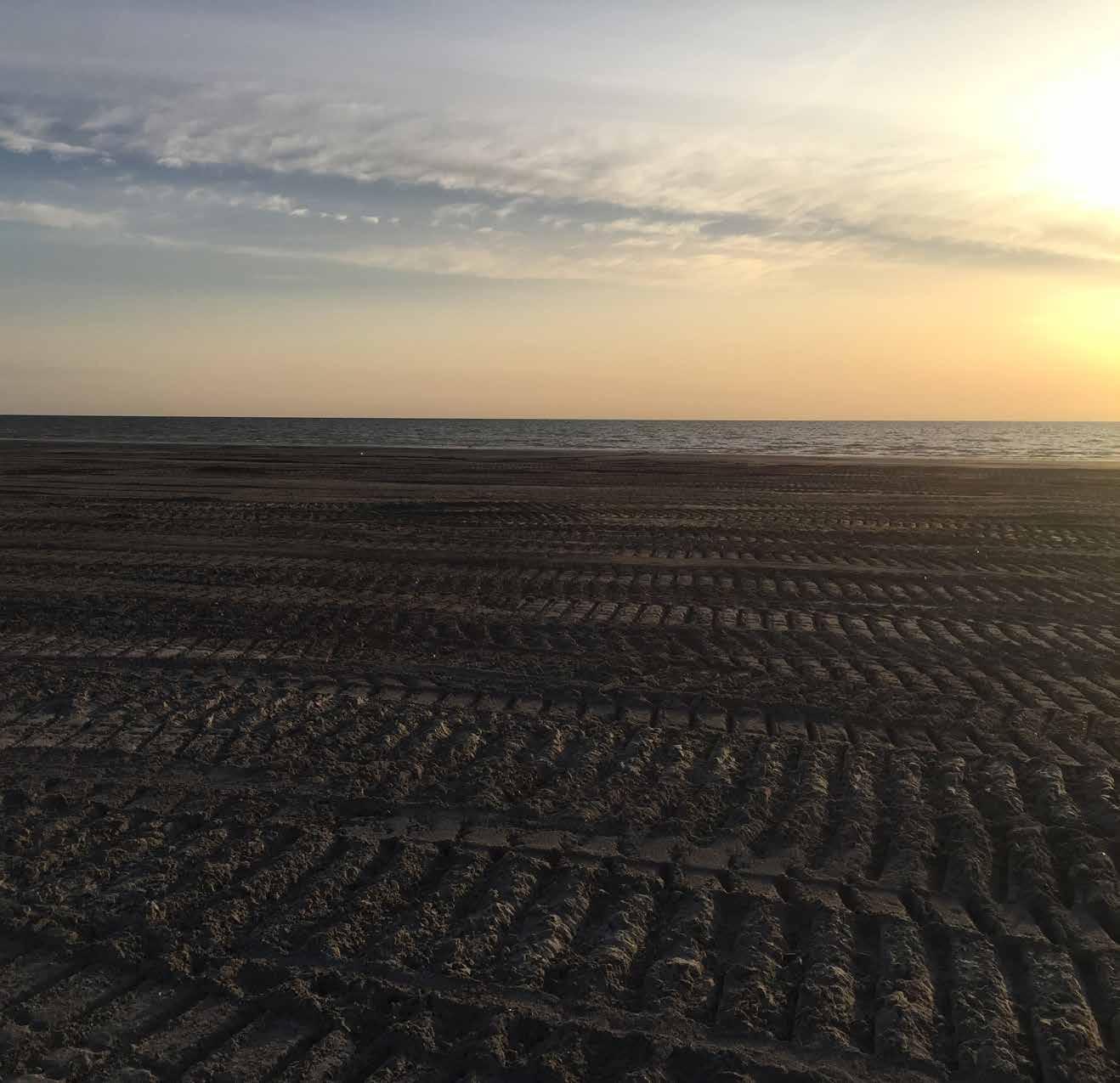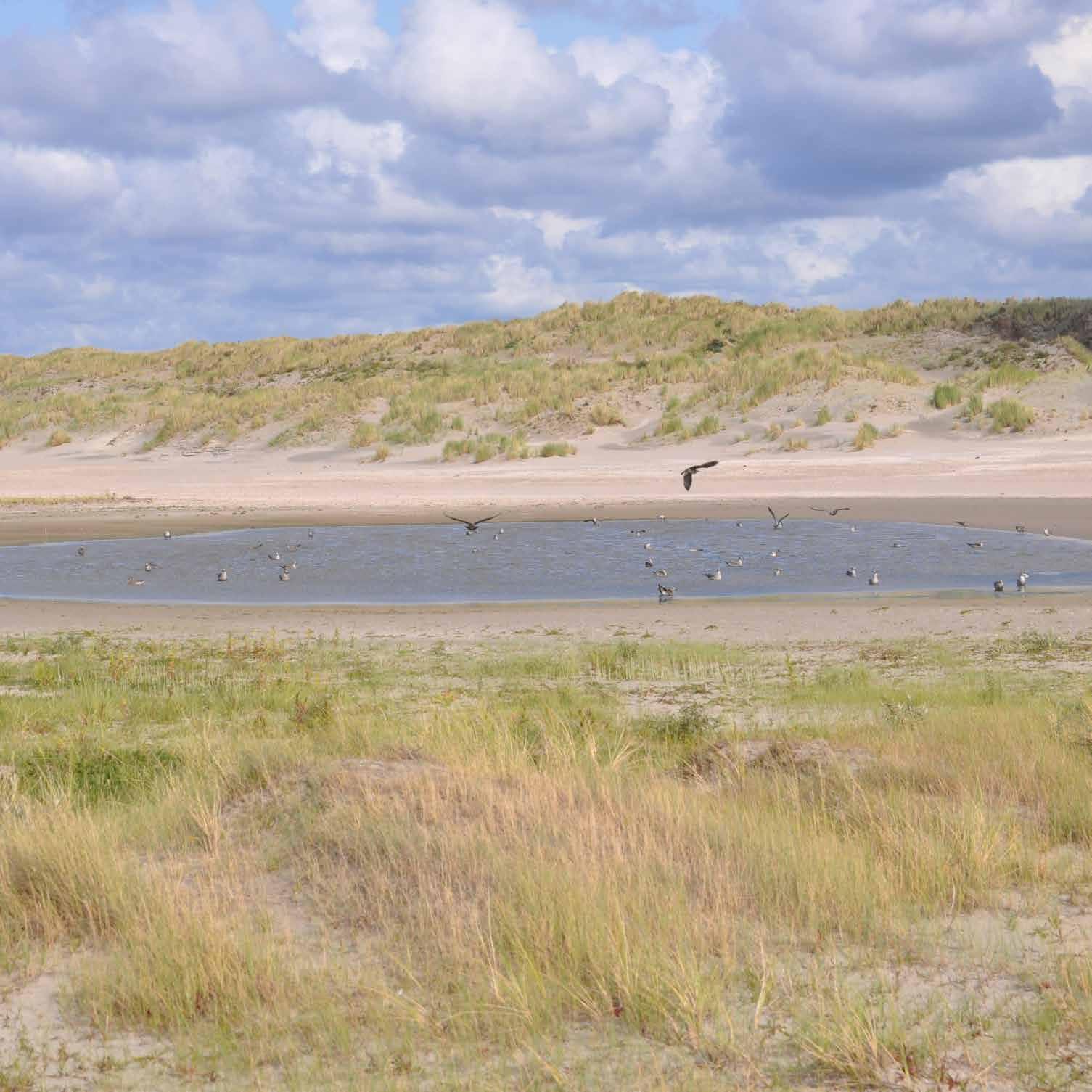Puyallup River Revetment Floodplains
Orting, Washington, United States
Protecting critical transportation infrastructure from flooding and volcanic hazards. In the shadow of Mt. Rainier, the high-energy, glacially fed Puyallup River runs through rural Washington. But a series of river-training facilities, such as traditional levees, and logging in the region have left the Puyallup disconnected from its floodplain and channelized, cutting off side-channel habitat for salmon and other species. Further, the river threatens nearby Orville Road East, a main transportation artery and lahar evacuation route. Using a technique known as restorative flood protection, Pierce County staff engineers, biologists, and planners began in 2018 a 1.6-kilometer project to open up approximately 28 hectares of previously disconnected floodplain and by 2022 will remove approximately 800 meters of an existing levee. The project has begun installing a series of discontinuous, engineered logjams to form a 1,200-meter setback revetment and will install approximately 40 more logjams throughout the newly connected floodplain. This will encourage channel braiding and habitat formation and discourage channel avulsion toward Orville Road. Already the work has restored the nature hydrological processes in the floodplain, promoting the recovery of three threatened salmonids: Puget Sound Chinook salmon (Oncorhynchus tshawytscha), Puget Sound steelhead (O. mykiss), and bull trout (Salvelinus confluentus).
204














